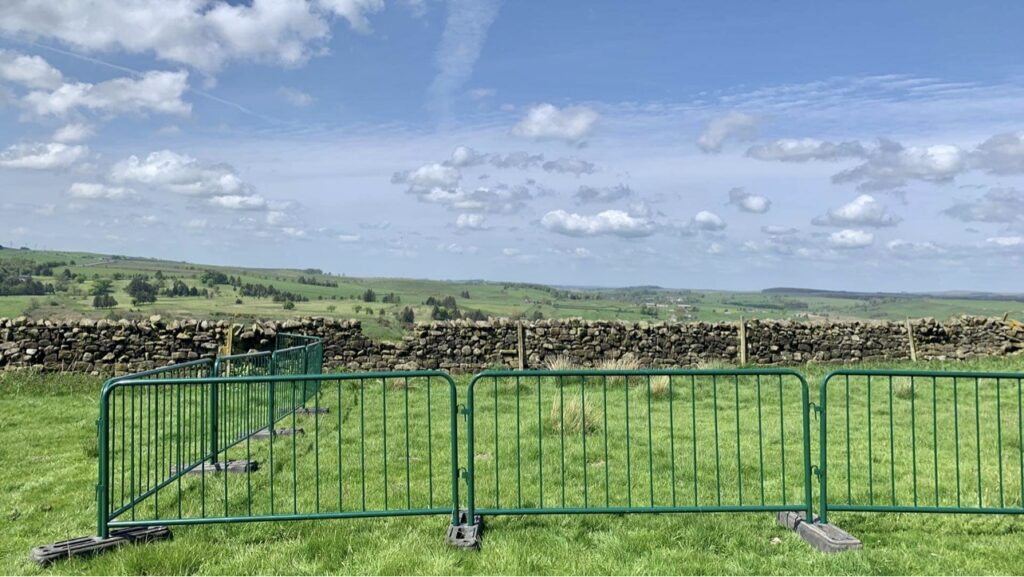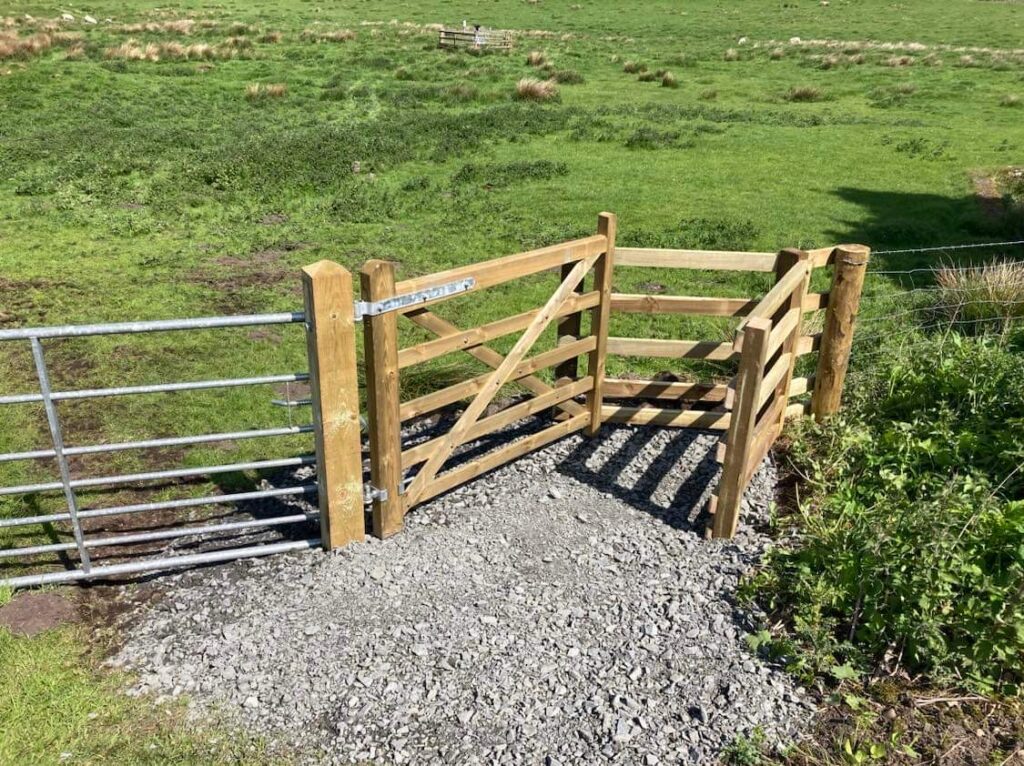Magna Dig Diary 2023
33 minutes reading time.
Looking for our 2024 Dig Dairy? Click here to get the news from 2024’s excavations.

Welcome to the Dig Diary, this is where we will post regular updates on the current excavations at Roman Magna. You will hear from our archaeologists and volunteers as they share news and thoughts about what is being uncovered, the challenges and the highlights of the excavation season.
Who you’ll hear from (guest volunteers will sign off with their first name and “volunteer”):
Rachel: Senior Archaeologist for the Magna Project
Franki: Geoarchaeologist for the Magna Project
Sophie: Activity & Diversity Officer for the Magna Project
Sonya: Vindolanda Trust Communications Manager
Exploring the season so far? Want to check on a specific period? Use the links below to take you to the start of each period of excavations. The latest posts are at the top of the page.
Period 1: 3rd July – 14th July 2023
Period 2: 17th – 28th July 2023
Period 3: 31st July – 11th August 2023
Period 4: 14th – 25th August 2023
Period 5: 28th August – 8th September 2023
Period 6: 11th -22nd September 2023
2023 Post – Season Round Up
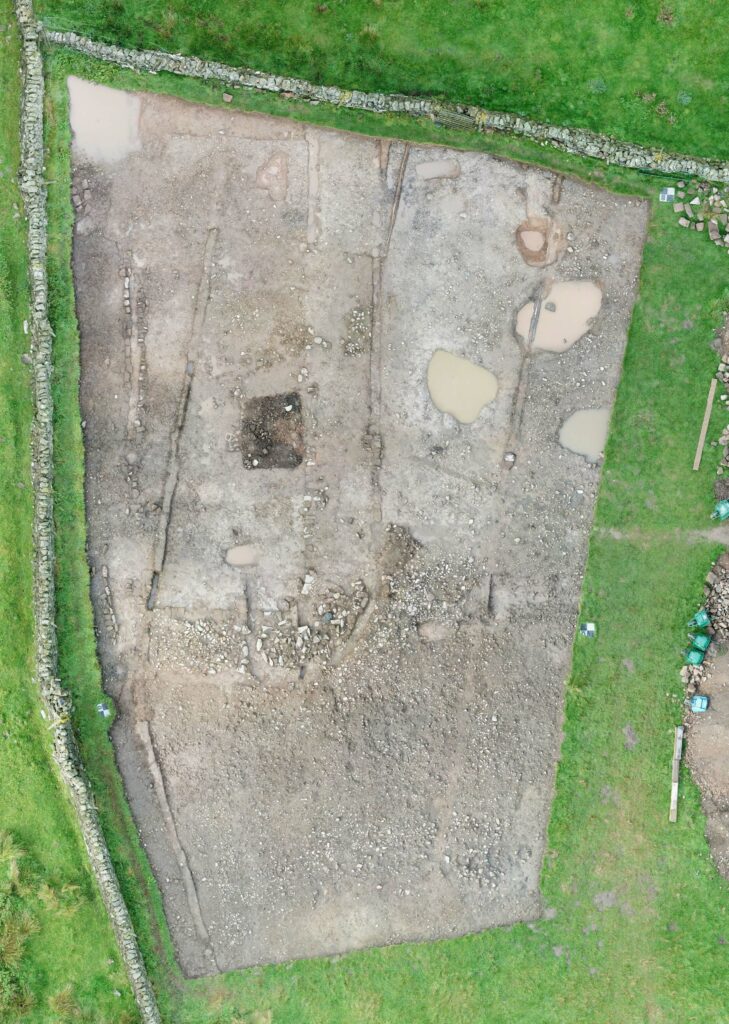
Thank you to everyone who has been following our updates as we have embarked on The Magna Project journey. And to those who have put trowel to soil (or cobbles!) it has been wonderful to share the past twelve weeks with you all. Back on 3rd July, we were going into the unknown history of Milecastle 46. Sitting a few hundred metres North of the Magna Fort platform, we were intrigued to understand the role that Milecastle 46 played on Hadrian’s Wall. Local troublesome tribe stationed at Burnswark, as well as the vulnerabilities of the valley, meant we knew this would be a strategic position for the Roman Army at the northern frontier. This contextualises the impressive 3.2m thick eastern and southern walls, as Milecastle 46 was one of the first three milecastles to be built along Hadrian’s Wall. The Roman Army would have been keen to establish a position on the Wall and make their presence known in the landscape. However, as we began to discover, this was not the only reason. Throughout the past twelve weeks, Milecastle 46 has revealed itself as a trading centre, and we can see why collecting customs charges as soon as possible would have been a priority for the expansive and expensive Roman Empire. Along with our dual balance, sherds of pottery and glass beads, this excavation has enriched our understanding of both the purpose of this milecastle and the relationship with those North of the Wall. Trade can indicate periods of peace – however uneasy – and the exchange of Roman silver, glass, and spices for Scottish gold, amethyst, and pearls gives us an intriguing lens with which to understand how Roman soldiers and Caledonian warriors interacted. Other structures that have appeared are a Roman drain, excavated alongside the central road as we have worked our way down the different road layers, from Medieval, Severan, Antonine and Hadrianic. Nestled against the eastern wall is a Well, which had some waterlogged preservation of leather and rope. All these features have allowed us to tell the story of Milecastle 46, so whilst we busy ourselves with research in the winter months, we can’t wait to discover even more as we move southwards in Year 2 to the Vallum and causeway crossing. So yes, more cobbles! Sophie
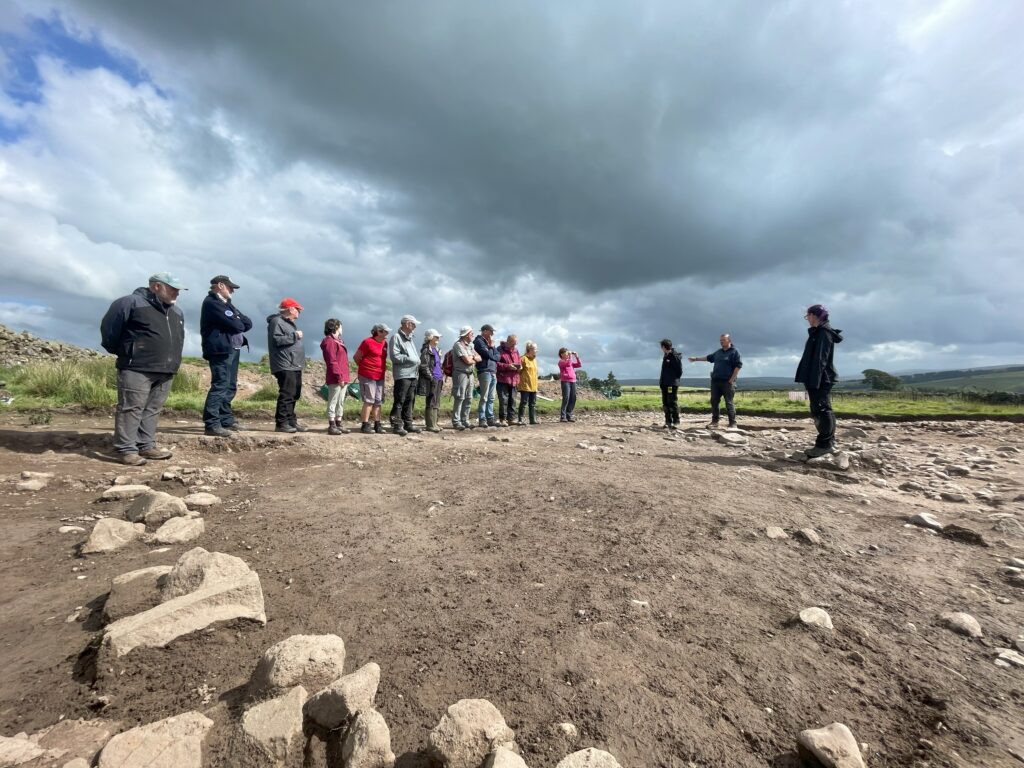
It’s been such an amazing first season of excavations here at Magna and I am absolutely blown away with all that we’ve been able to get done during our twelve weeks. We started out with a field of grass, sheep, and cows – now we have the foundations for a broad-walled milecastle. It’s sad that the excavation season has ended, but I am excited to begin our winter of research and processing in order to further uncover the secrets of Milecastle 46. Although we’ve gained lots of information throughout the summer, we’ve been left with a multitude of questions that need answering. I am most intrigued by the large pits just east of the milecastle walls and am hoping my soil analysis will shed some light on these mysterious features. Overall, it’s onwards and upwards for us here at Magna and we couldn’t have started this project on a better foot. Franki
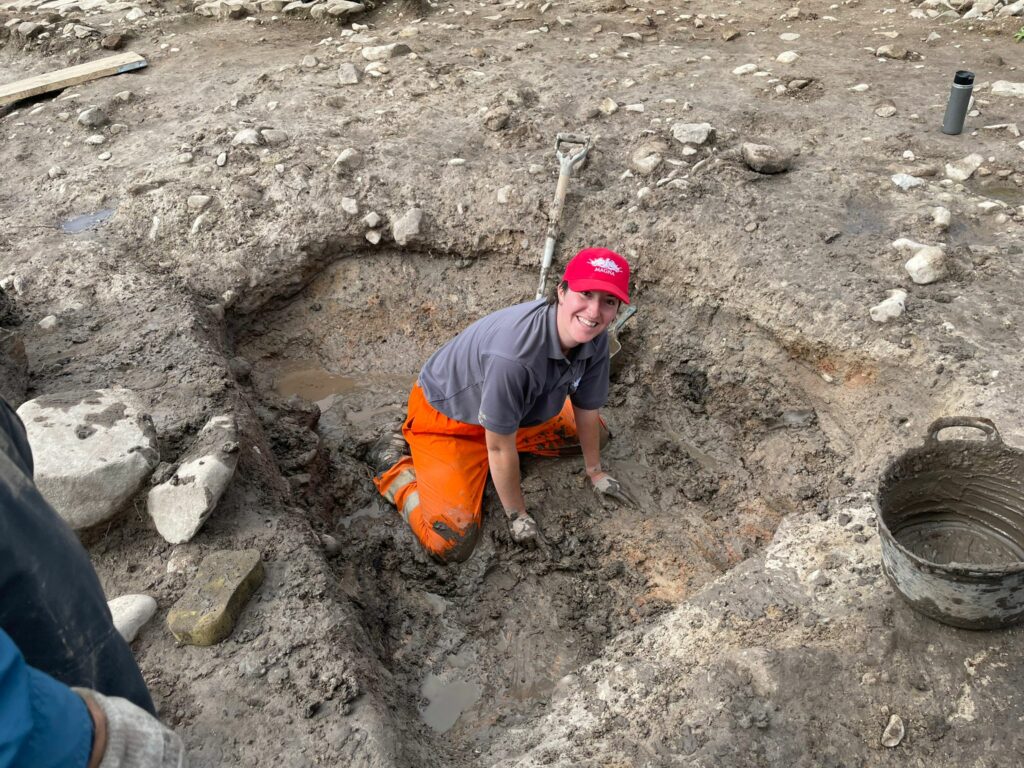
Our first summer at Magna has absolutely flown by, I can’t believe we’ve already reached the end of the digging season! It’s been amazing getting to meet so many of our enthusiastic volunteers and even start a few people on their archaeology addiction. We can’t wait to see you all back again next year. It felt like a fitting end to the season to return to one of the first features we saw on site for our final few days – the central road running through the milecastle. Despite it having been visible all summer in one form or another, our road still had a few more surprises in store for us! The final count on all the different layers of resurfacing is four roads, with some additional patching up between different layers. The earliest is the Hadrianic road that would have been built at the same time as the milecastle itself. A new road surface is then laid in the Antonine period, with the third most likely being added during the Severan period. Our fourth and final track doesn’t come until later and can be dated to the medieval period thanks to pieces of green glaze pottery found amongst its stones. The Antonine road builders also added a very nice stone drain running along the edge of the road, something that would definitely have been needed with all the rain in northern Britain. Milecastle 46 certainly had some surprises hidden beneath the grass and has given us plenty of questions to try and answer this winter before its time to delve into the Vallum! Rachel
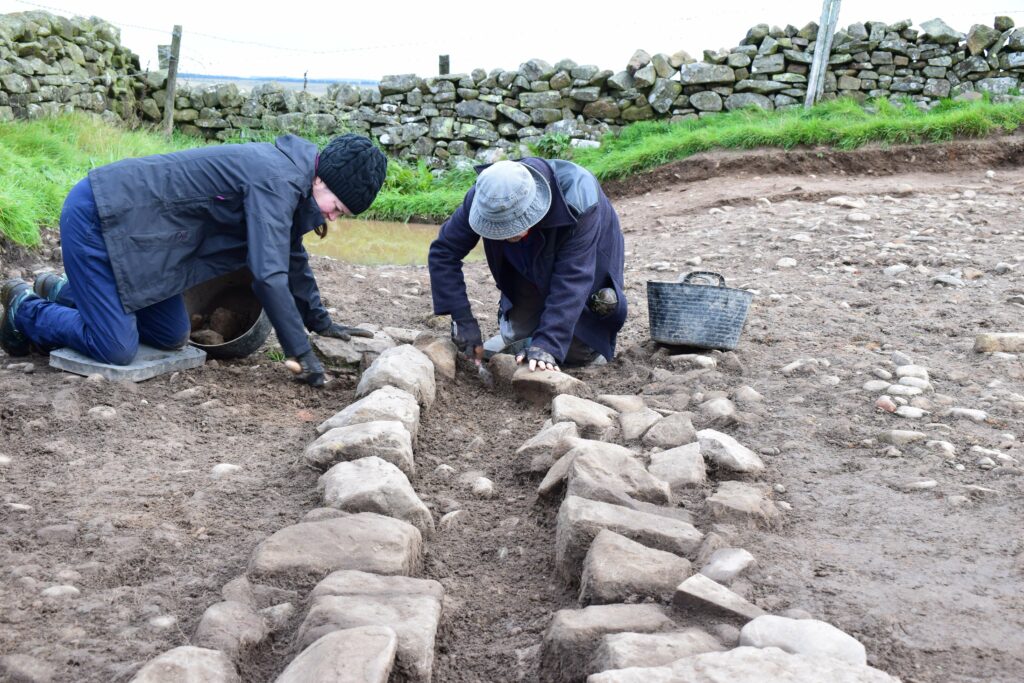
29th September 2023
Period 6 and the end of the Magna season had been marked by rainy days in both weeks, giving rise to twitchy fingers from a lack of trowelling. The inactivity was mitigated with informative interesting lectures from Rachel on Magna from antiquarian and recent surveys, and Franki on the climatic changes, as well as great walks ending in excellent cafes. Baking featured heavily in the two weeks, courtesy of Elaine, Richard, and Rachel; we were all smacking our lips. Thank goodness we had the barrow runs to counter the goodies. On a serious note, we commenced with removing the topsoil to find the cobbles, and they became a big feature of the two weeks; the exciting bit was when Rachel or Andy would look at the newly uncovered cobbles and tell us how they fitted in the wider scheme of the Milecastle. That certainly provided a boost and meaning to the seemingly endless cobbles (😉). Magna is a puzzle, and uncovering the puzzle will be the draw for returning. Here’s hoping I get a slot next year at Magna.
Thank you to Rachel, Franki and Sophie for our daily encouragement and knowledge base, and Andy for his visits and boosters. Yua Haw Volunteer
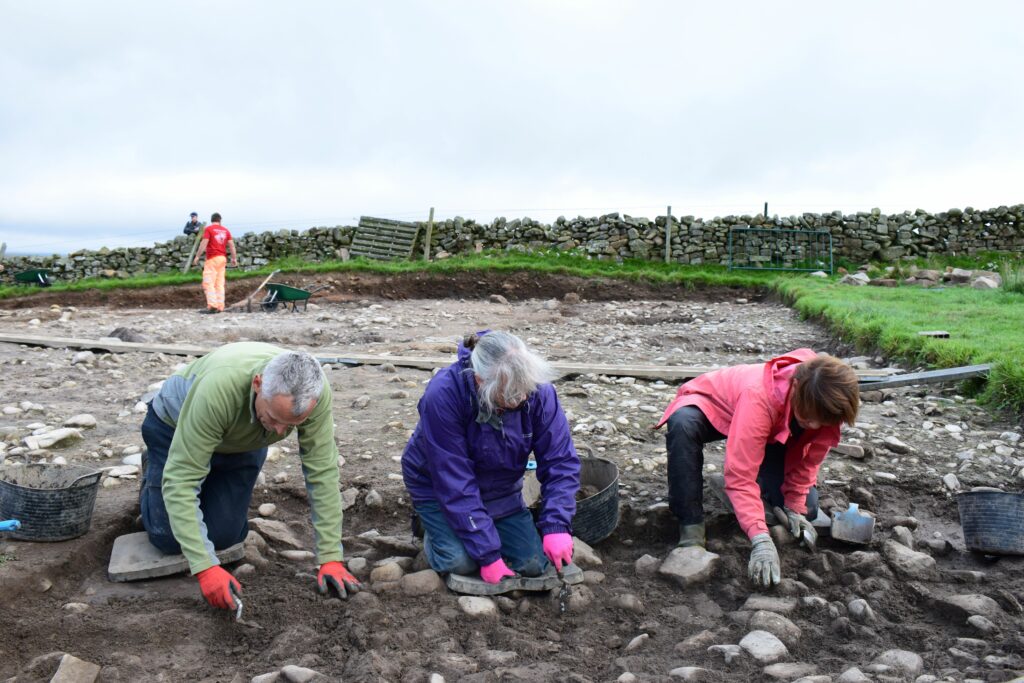
28th September 2023
What’s it like, volunteering at Magna? Well, for a start, you aren’t at Magna. This season, you would have found yourself on Milecastle 46. And next season in a ditch. What would you find? Would you be waving the staff of office around on a regular basis with your coins, beads, metal weapons etc? No, you wouldn’t. I don’t think that many people lived at the Milecastle so not many artefacts were lost there. But you would have found actual stones from Hadrian’s Wall. You would have found 3 layers of cobbled road leading to the north, a well with (possibly!) a bit of the rope and bucket still inside, pits and more cobbles. You would have had good descriptions from the Rachel and Franki of the ground you were digging and a great time with a willing crew of diggers. You would have visits from the walkers on the Wall and lots of excitement from the sheep in the field on the way out to the site. You would have had regular visitors on site tours with Sophie and with Andrew Birley casting doubt on your latest post hole feature. C’est la vie! Diana Volunteer
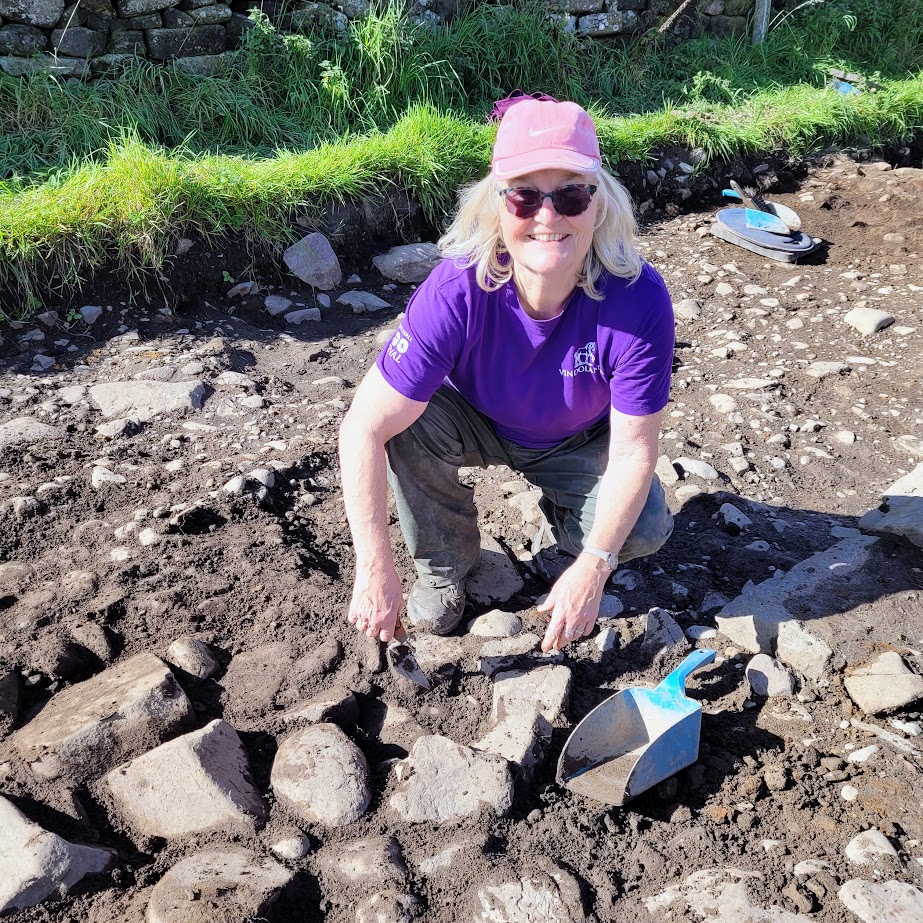
22nd September 2023 – Final Day of Excavations!
A huge thank you to all our volunteers this season for all their hard work and for testing our systems for the years to come. The team photo below is our Period 6 team, today on the last day of excavations at Magna for 2023 – what a great 12 weeks we’ve had. Thanks to Period 6 for finishing the season in such high spirits and we look forward to welcoming everyone back to site next year. This is not the end of the dig diary for this year Rachel and Franki will round up this year’s excavations in the coming weeks, plus we’ll have exciting hints for what’s to come next year.
Thanks again to everyone who has been a part of this years excavations!
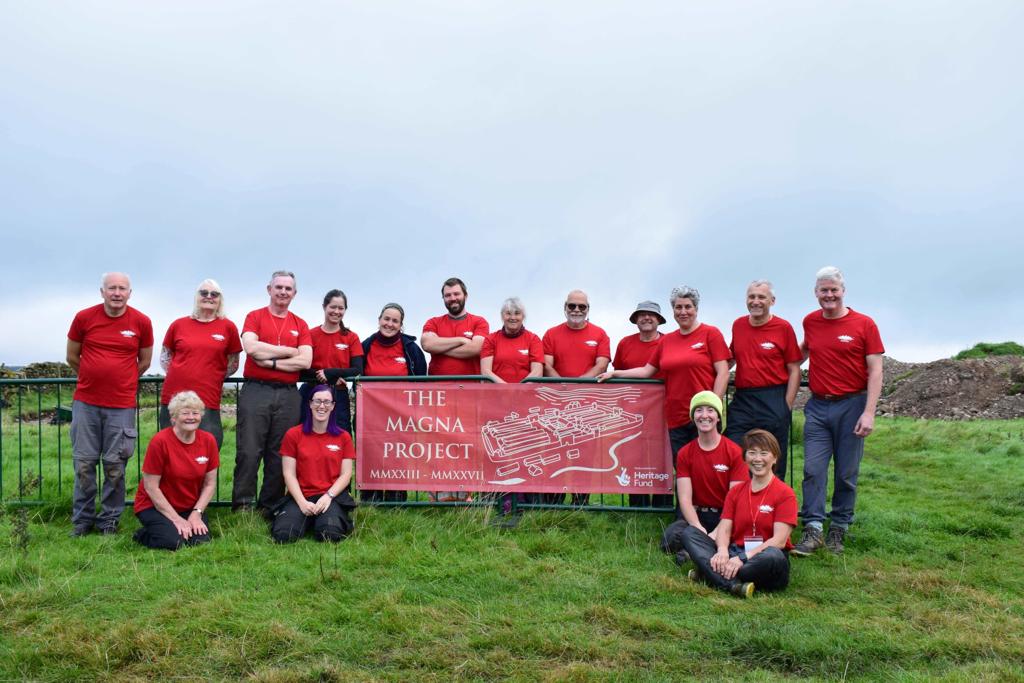
To find out more about joining next years excavations visit Magna Excavations 2024.
21st September 2023
With one day to go in the final week of our 2023 excavations up at Milecastle 46, the Magna weather has given us the same wonderful send off as we had in greeting… torrential rain and gale force winds! Our Period 6 team are now working hard to bale out the pits (now ponds!) and continue to excavate the roads connecting to MC46 from the south and the east. We are so excited to see the final arial shot of the site and reflect on all the hard work from this year. Just to pray to Jupiter Dolichenus for a dry end to the season… Sophie
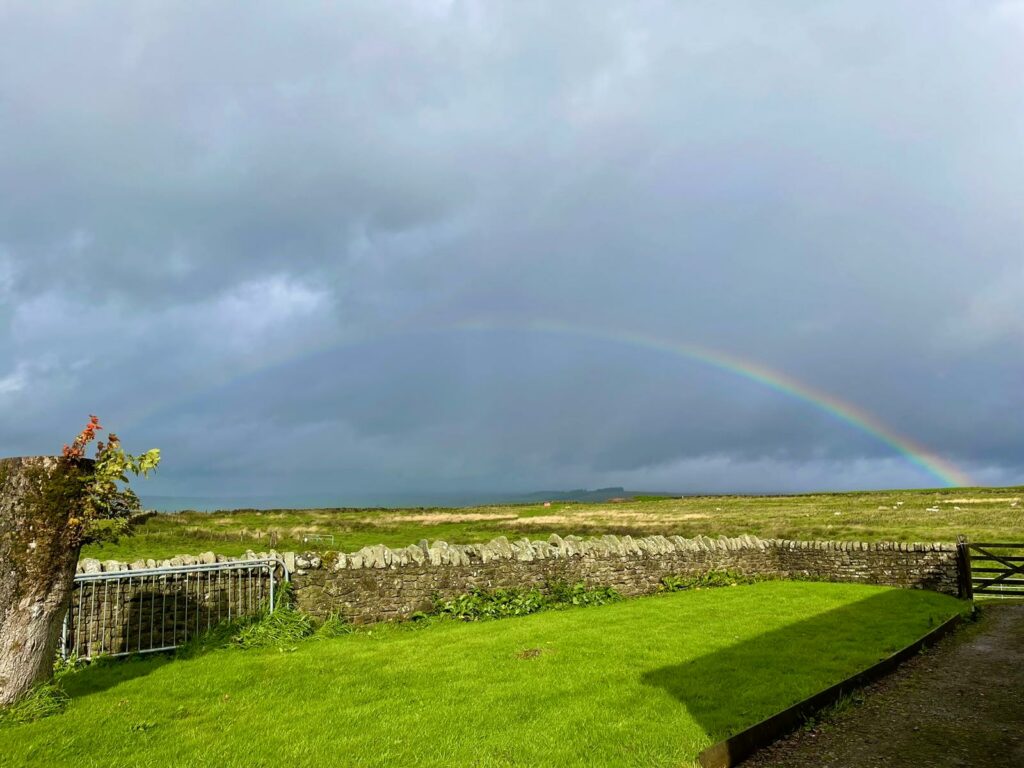
18th September 2023
I can’t quite believe we only have one week left of our excavations this year! The past 11 weeks have absolutely flown by but there is still plenty to keep us busy in our final week on site. We are still on a quest for the north gate of the milecastle and are also working on fully exposing the original Roman road running through the milecastle.
We reached the base of the well on Thursday and while it wasn’t quite as deep as the praetorium well over at Vindolanda there was still some lovely anaerobic contexts at the bottom which had preserved wood, leather and rope pieces. Unfortunately, there was no clear timber or stone lining and the clay sides have already started to collapse in the heavy rain on Friday, so we won’t be able to leave it open.
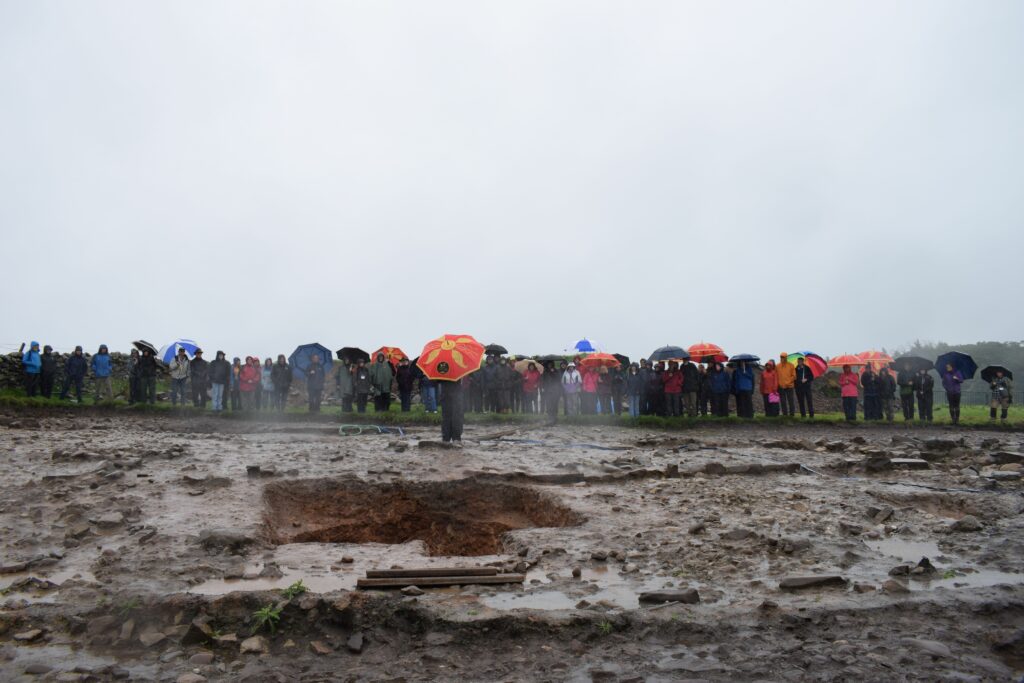
Friday was also our annual Friends Day, and it was great to welcome so many of the Friends of Vindolanda to Magna for the first time, despite the challenging weather conditions! Being able to share our updates in person, both on the milecastle excavations and the project as a whole, was the perfect opportunity to thank everyone for your ongoing support of the Trust. I look forward to seeing many of you again over the coming years both in and out of the trenches and can only hope it will be in drier conditions! Rachel
8th September 2023
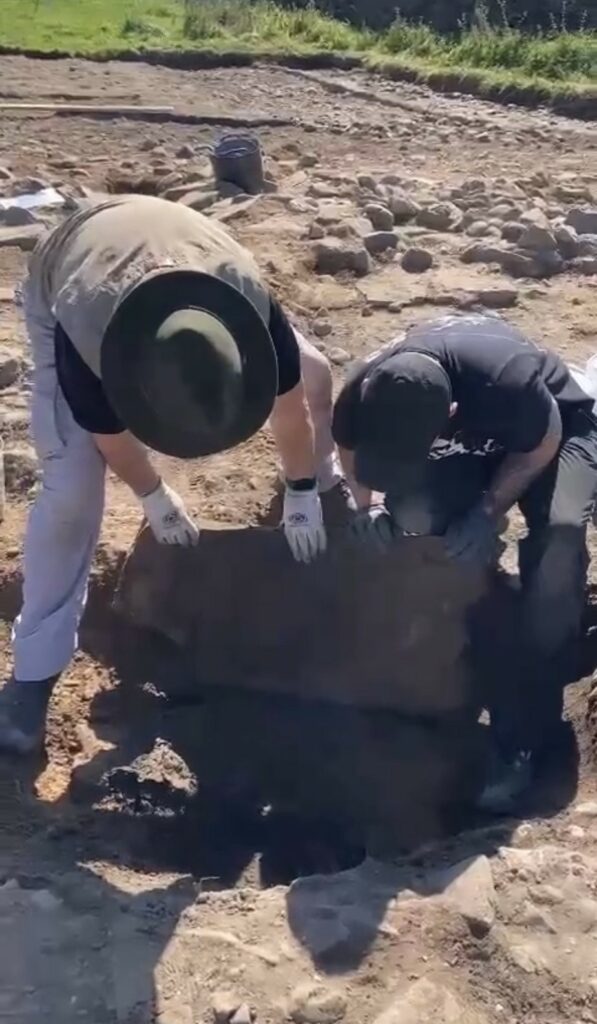
And just like that, we have two weeks left of our Magna Project Dig for Year 1! Earlier in the week, we teased you all on social media with a potential inscription stone found inside the eastern foundational walls of MC46. If you haven’t seen it yet, check it out here.
But alas, it was just that – a tease! Meaning the claim of finding the Magna Project’s first inscription is still up for grabs. Taking the challenge on will be Magna Period 6 Team, who will be working hard to finish up this excavation season. They will be tasked with continuing to excavate the North Gate of MC46, diving deeper into our well, and of course – cleaning up the cobbles surrounding the Milecastle. I can’t wait to see what our final two weeks have in store for us! Sophie
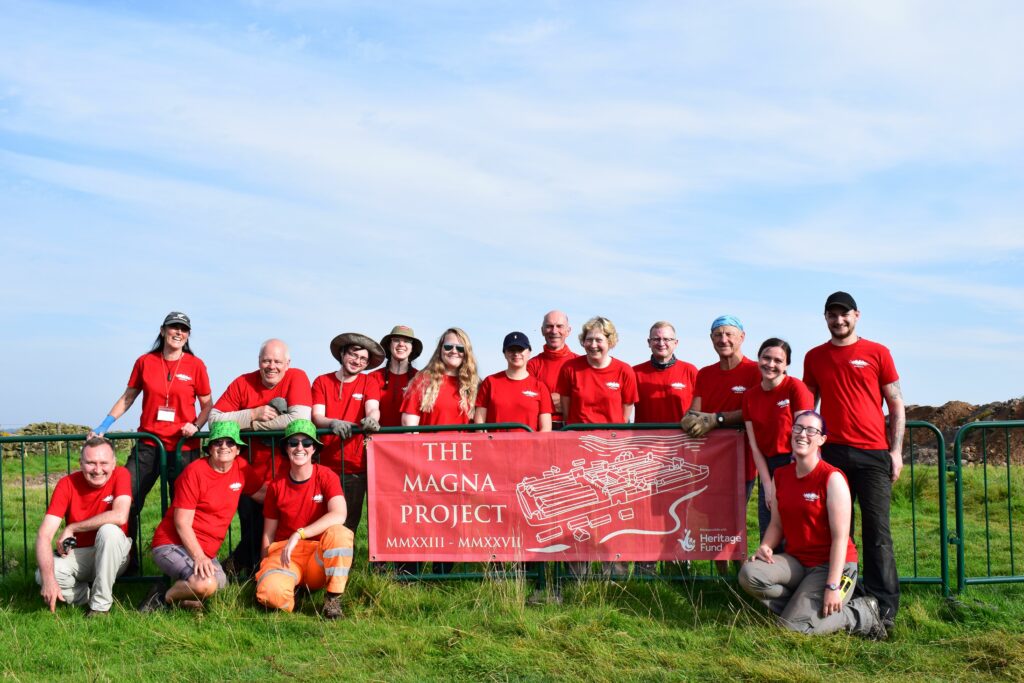
7th September 2023
It’s been a whirlwind week for us up at Milecastle 46. We’ve excavated a number of extramural pits which have shown themselves to be quite large and deep. The usage of these pits is not yet clear but hopefully our post-excavation research will reveal their functions. We’ve also discovered a well inside the Milecastle walls which has already given us some lovely pieces of pottery. It’s unclear how deep our well will go but I’m hoping it’ll be comparable to Vindolanda’s praetorium well which is about 18 feet deep. While we’ve been digging all of our pits, we’ve taken a number of soil samples which will be processed during the winter in our post-excavation season. These samples should tell us more about the local environment when these pits were backfilled, landscape usage, and maybe give us very small pieces of pottery or animal bone that might’ve been missed during the initial excavation. The prospect of learning about the historic landscape is very exciting and now we have lots of potential data to support our research.
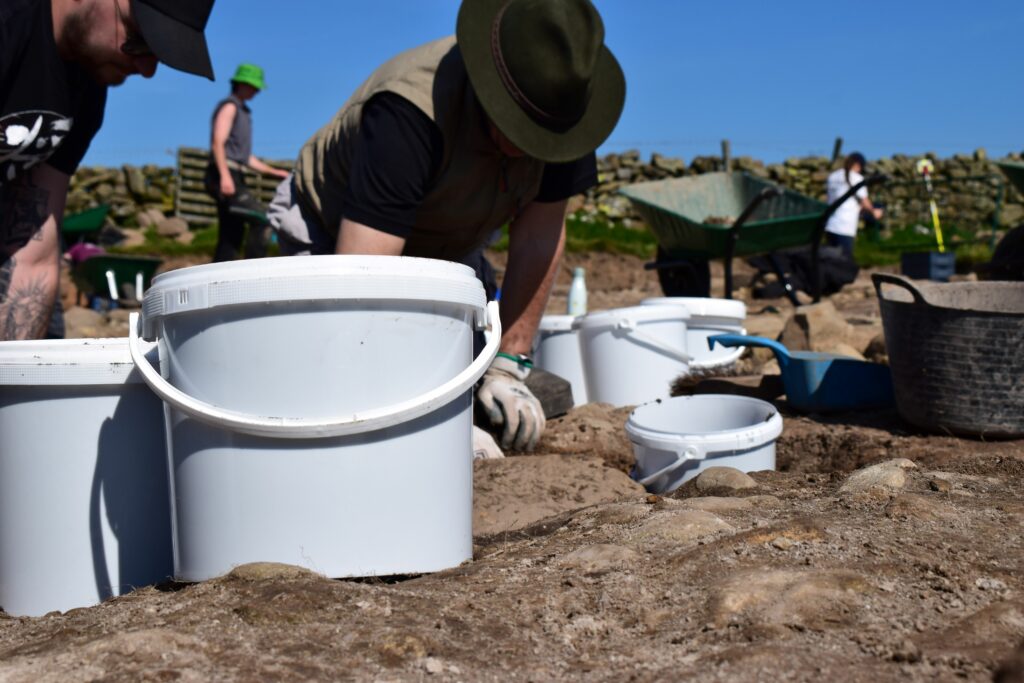
In addition to our many, many pits and buckets of soil samples – we’ve also found some foundational stones for Hadrian’s Wall! We were only expecting to get a small portion of the wall (if any part of it) within our trench so the fact that we have a good sized stretch of stones is absolutely thrilling. This also bodes well for our goal of uncovering the northern gate of Milecastle 46. We will have a very busy but highly rewarding final two weeks of excavation I imagine. Franki
3rd September 2023
The excavation at Milecastle 46 reached a milestone in the last week as we welcomed our 1,000th visitor to the trench edge to see the progress being made. Over the summer it has been wonderful to see so many people make the journey from the Roman Army Museum to the excavation site – especially as for much of the ‘summer’ the weather has not been particularly enjoyable for a stroll through the field!
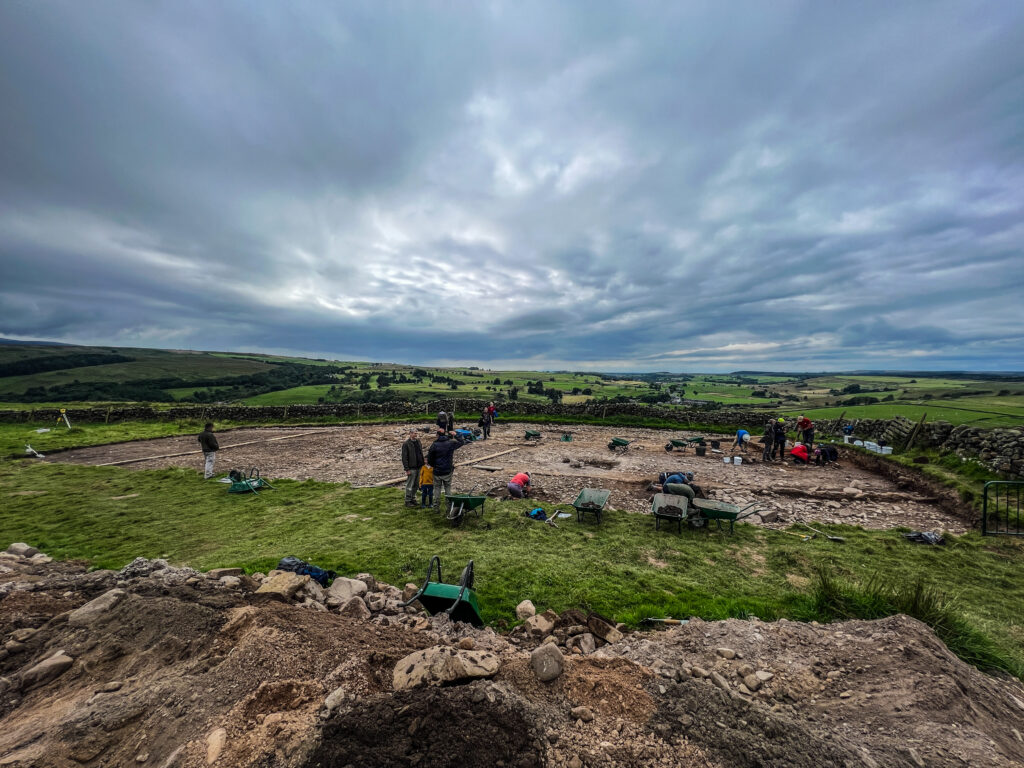
We have just three weeks left now of the excavation season this year at Milecastle 46. There is no sense of winding anything down, our Magna Period 5 team have made fantastic progress in their first week and the site continues to give us a few surprises. Keep dipping back into our dig diary to find out more about those in the coming weeks. Sonya
25th August 2023
It is hard to believe that we have just four weeks to go until the end of our Year One Dig with the Magna Project! Whilst the temptation to insert a quip about the Magna weather is strong, being out in the wind and rain has certainly been worth it as we discover more about this site and its uses up on Hadrian’s Wall. Pits and cobbles have been Period 4’s theme of the fortnight, with our trench extension southwards revealing the continuation of a cobbled causeway enabling communications south to Magna Fort. This feature aligns with our understanding of Milecastle 46 as a customs point along Hadrian’s Wall, moving goods out of and into the Roman Empire via the two main transits; the Stanegate and Maidan Way. In addition, the discovery of a singular coin, although in poor condition and the only one found in a fully excavated area, further reinforces the narrative that Roman soldiers stationed up here were engaging with trade to the North of Hadrian’s Wall. Hadrian’s Wall was not an impermeable structure defined by continuous conflicts, but, at Milecastle 46, a control point where periods of peace allowed for trade across the northern frontier of the Roman Empire. The baton for excavating these pesky pits has now been passed onto the Period 5 Team – and we are delighted with the hard work of the previous four teams who have (literally) paved the way with a multitude of cobbles here at Milecastle 46. Sophie
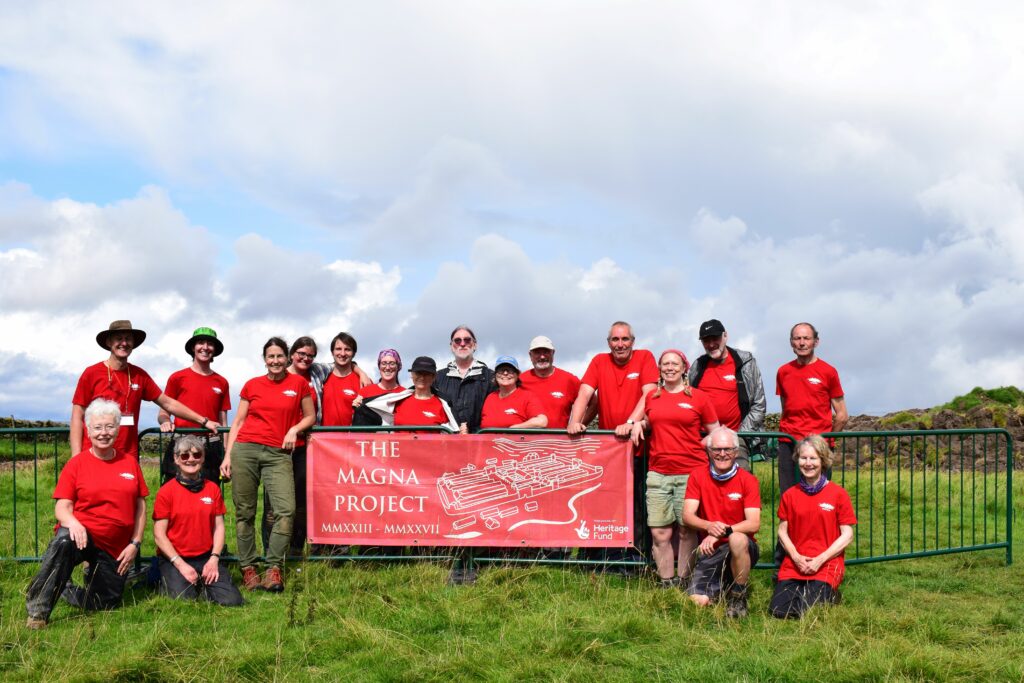
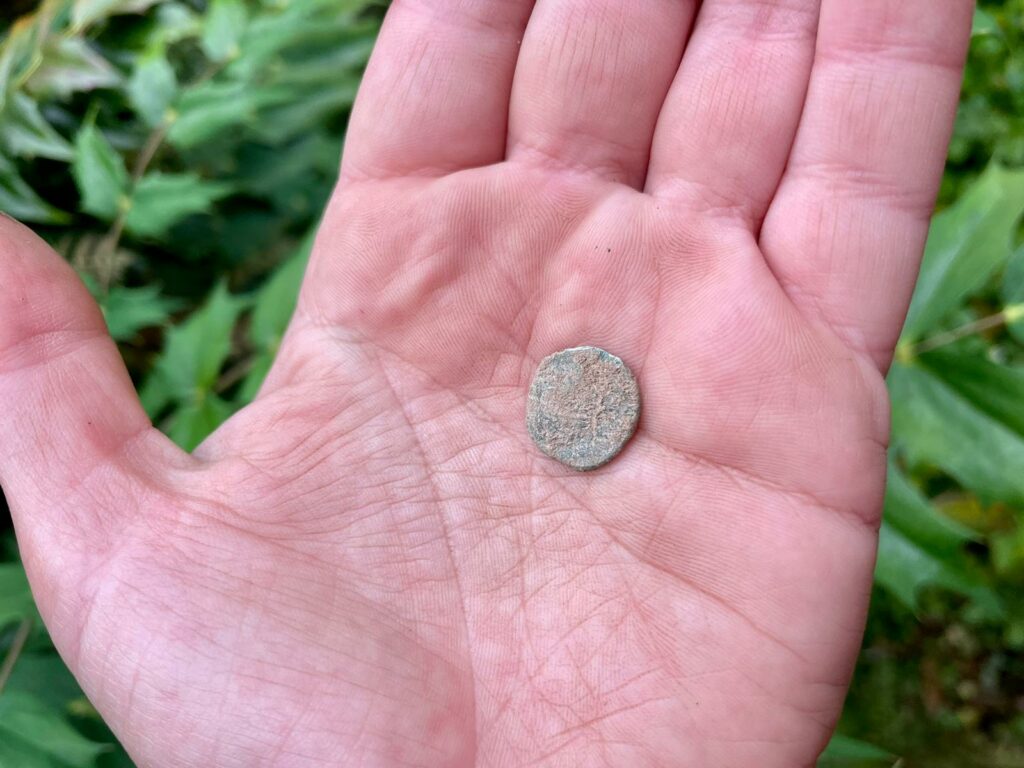
22nd August 2023
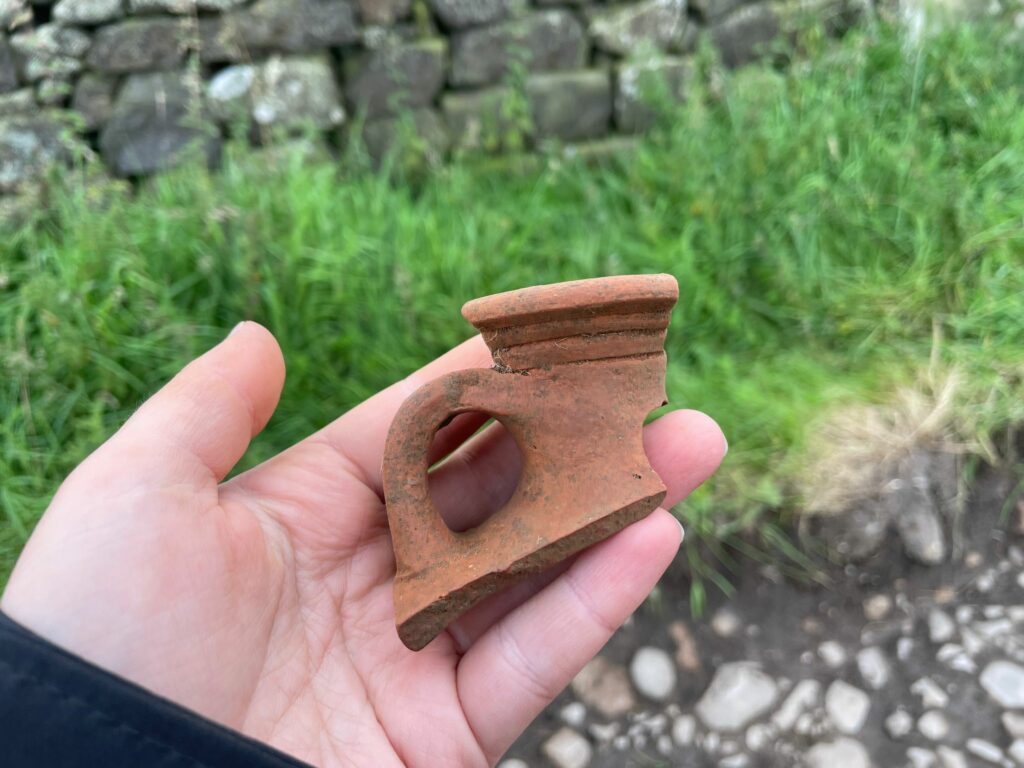
There have been some big changes at Magna in the last week, most obviously the extension of the trench southwards! We decided to open up the area immediately south of the trench to give us a better idea of where all of the roads and cobbled surfaces outside the milecastle are leading to, and hopefully see some junctions forming between the different sections. The central road heading out of the milecastle is already under investigation, but I can’t wait to see what else comes up as we continue working in this new area. It’s also been really nice to see a few more Roman artefacts being found, including some Roman glass and the top of a ring-necked flagon along with other promising discoveries! Rachel
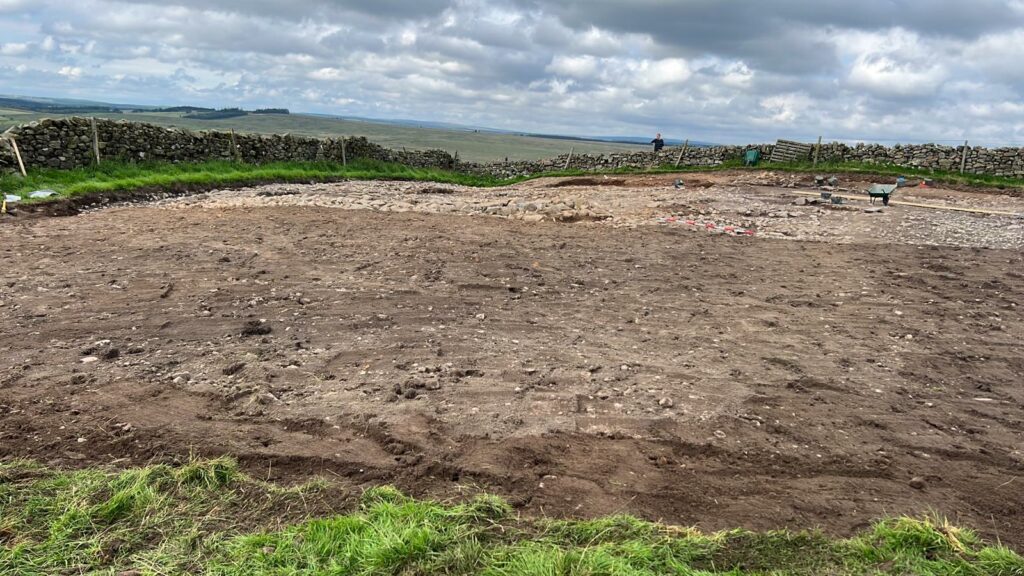
14th August 2023
We’ve officially reached the halfway point of the 2023 excavation season at Magna! The exploration of both the interior and exterior of the Milecastle is really coming together and we have a few unanticipated features to explore during the remainder of our season. This past week we found a lovely decorated Samian sherd in what appears to be (at this point in time) a large pit just outside of the Milecastle walls. This is our first piece of decorated pottery and we are excited by the prospect of finding more imported goods. We were not expecting to unearth fineware at the Milecastle, but this nevertheless furthers the narrative that Milecastle 46 was used as a customs point for those going in between Roman Britain and “barbaric” Caledonia. So far our excavation is building a wonderfully rich narrative for the Roman usage of this landscape and I’m hoping that these next few weeks will allow this narrative to grow even more. Franki
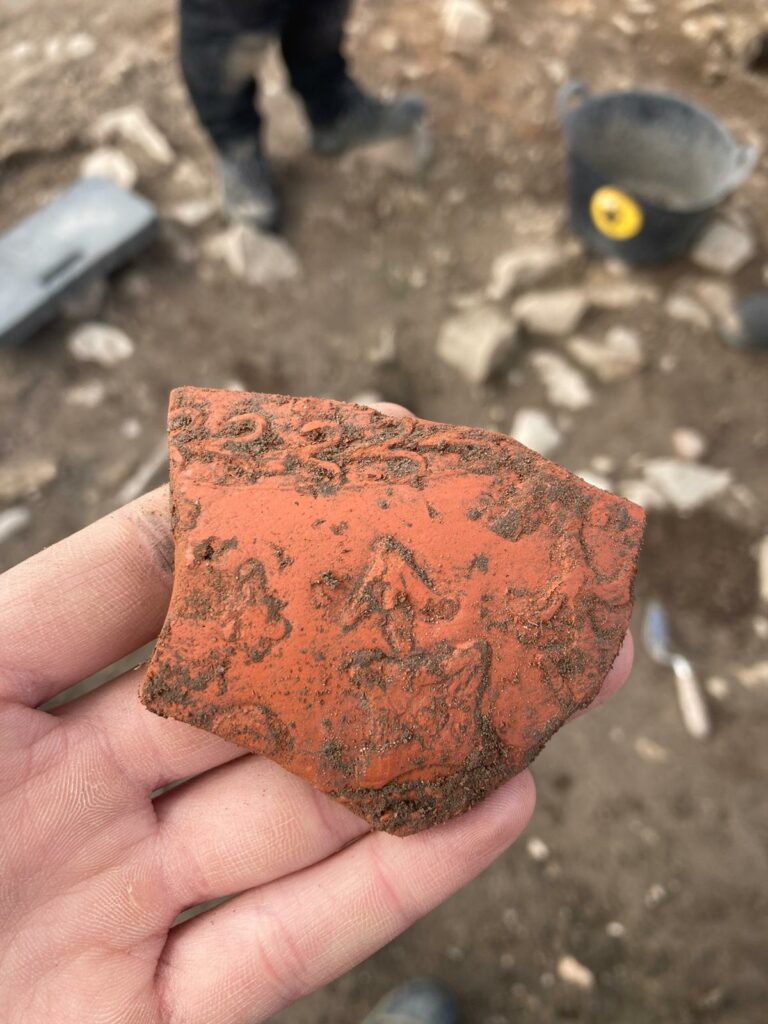
The whole team have been delighted to discover this decorated sherd of Samian at the northern frontier of Roman Britain. Each individual sherd of pottery has the potential to make a connection with the last ancient person who held it. A pottery sherd can tell us about when the pot was made and used and about the journey it took to reach the edge of empire at Milecastle 46.
In the next 5 years it is anticipated we will uncover up to 200,000 sherds of pottery from the excavations at Roman Magna and Roman Vindolanda. To fully realise the potential of pottery the Trust needs to raise resources to bring pottery studies back to the very top of the table, where they belong. If you are a fellow sherd nerd like us, please follow this link to donate to the Vindolanda Trust Race to £100k Pottery Appeal before the end of excavation season on 22nd September. Sophie
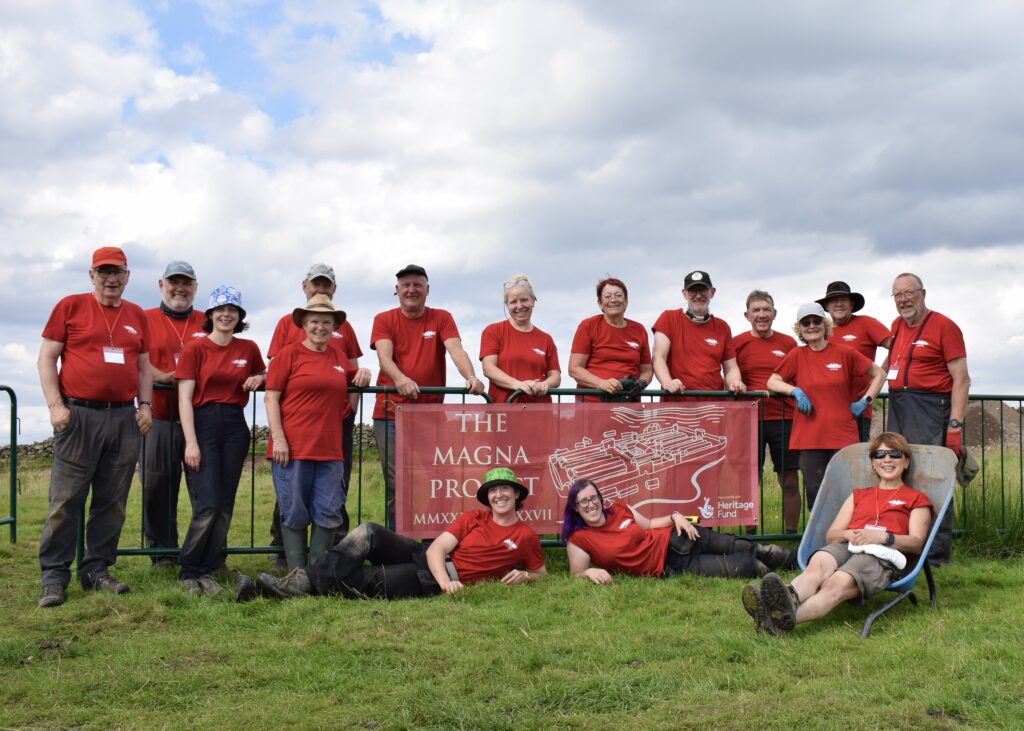
8th August 2023
Well, it certainly hasn’t felt much like summer for the first week of period 3, but as our hardy volunteers have been learning, too wet to dig doesn’t mean too wet to go outside! On the days that we’ve had to postpone excavations we have been heading out with the volunteers along nearby sections of Hadrian’s Wall, including a walk between milecastles 48 and 49. This gave everyone a chance to see what sort of internal layout our milecastle may have originally had and discuss the practicalities of daily life for the soldiers stationed there. The dreich conditions didn’t dampen our enthusiasm and we were also able to investigate some of the flaws and quirks of the Wall construction such as the change from broad wall to narrow wall and the remains of the Willowford Bridge that had to be frequently rebuilt to cope with changes in the river’s course. Rachel
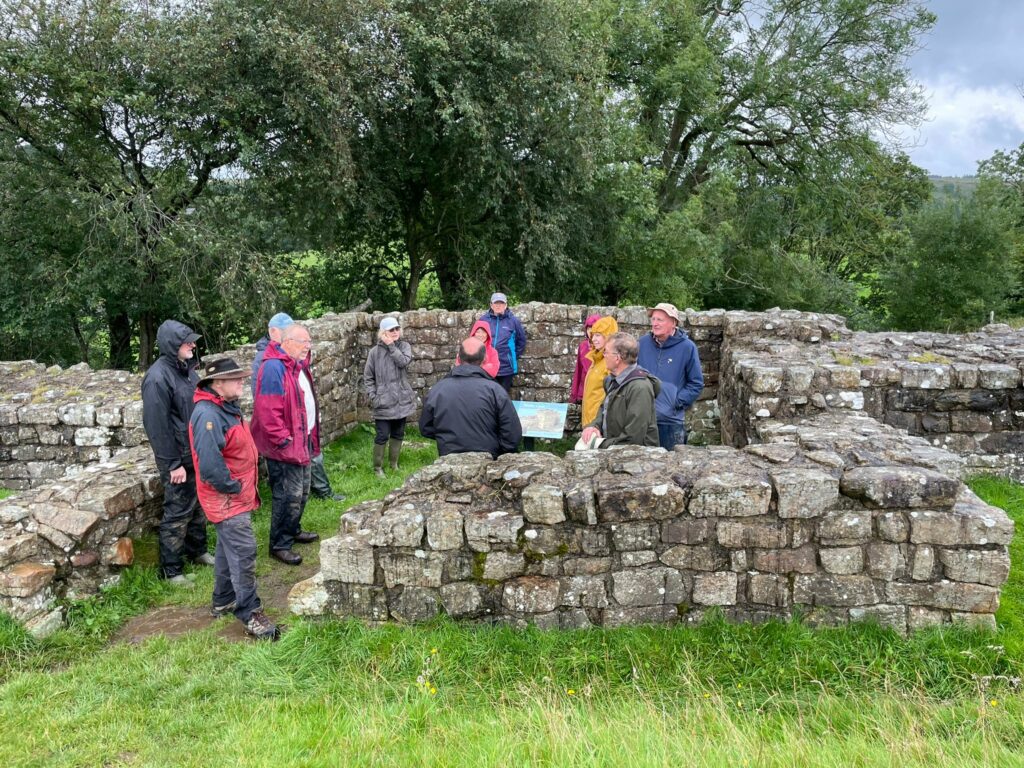
We also took a lovely walk down to “the tallest standing Roman stone wall in Britain” AKA Thirwall Castle. We joke about this title, but it’s not too far off considering that this castle was built almost entirely using stones robbed from Hadrian’s Wall – and perhaps even from our own Milecastle 46. This walk is a wonderful opportunity to put the local area in context and see how the landscape has developed since the Romans left Northumbria. It’s amazing what you can pinpoint in the landscape with just a little bit of guidance, local lore, and critical thinking. Of course, we also had to stop by a tea room and have some cakes and coffee as a reward for all our hiking in the rain. This is one of my favorite walks to do but I am glad that we’re having some more sun this week. Franki
Despite the best efforts of the weather, we were still able to make good progress on site, continuing to work on the area outside of the milecastle. While there are fewer clear structural remains in this area, we have plenty of enigmatic features to investigate and have found another trade related artefact to go along with the balance arm from last period! One of our volunteers recovered a circular weight with a central hole that also links into the history of trade or taxation taking place at this strategic crossing point on the Roman frontier. Rachel
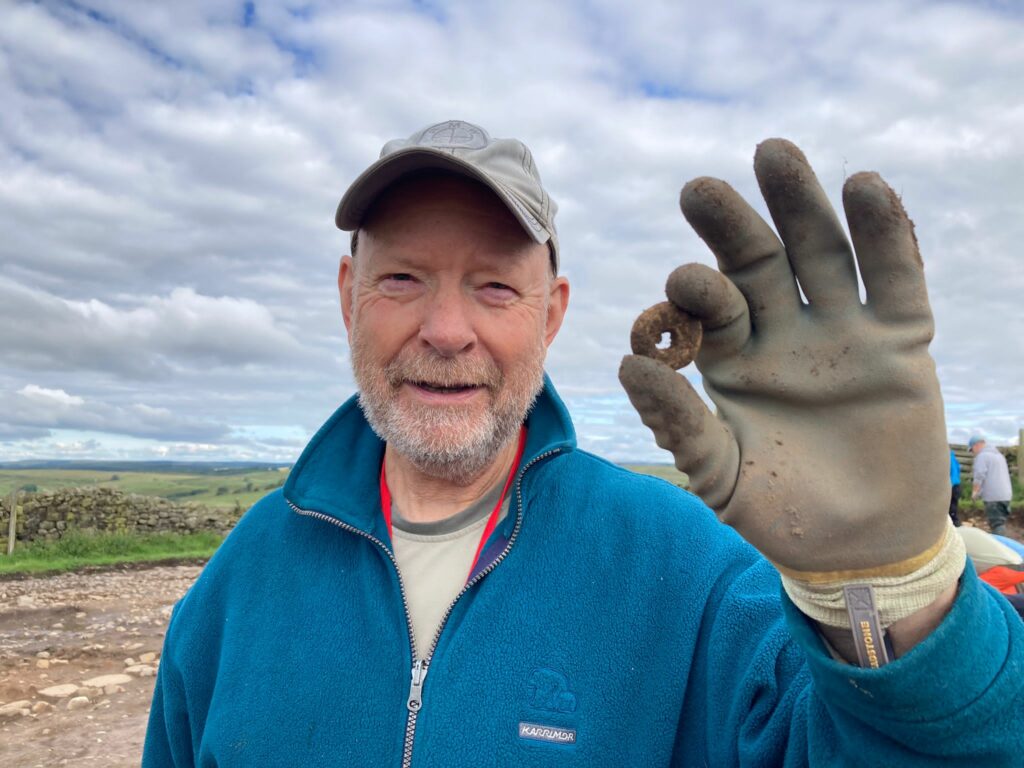
31st July 2023
Magna Group 2 have officially been dismissed, but the memories of our two exciting weeks excavating MC46 will stay with us all. The milecastle is perched on a strategic high point, in pastureland with stunning views west to Burnswark Iron Age Hillfort, south towards Epiacum Fort in the North Pennines and the Border Hills to the north. Most of us were archaeology veterans, all united in our passion for Roman Archaeology. No de-turfing or soft soil; we couldn’t wait to follow on from the good work of Magna 1 Team.
‘This excavation is how most digs are; you have been spoilt at Vindolanda’, Andrew warned us. A very different experience was in store as we trowelled piles of stones and possible cobbles under Rachel’s steady and encouraging guidance. Andrew visited to inspire us with his interpretations of our structures, Franki introduced us to the pleasures of Piezometres and soil sampling to discover more about human occupancy – as well as the idiosyncrasies of the Total Station for surveying.
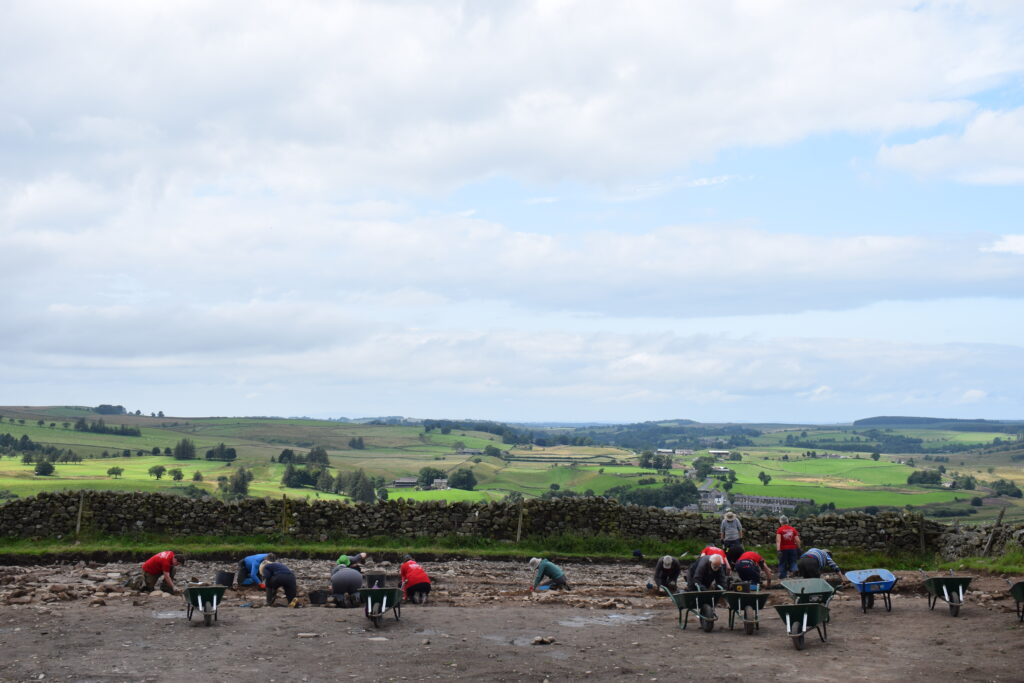
When the rain hammered down on the yurt roof, we enjoyed lectures from Rachel and Franki. An additional tour of Vindolanda excavations and site with Andrew was also a highlight. Watching Graham, the potter, at work at the kiln at Vindolanda was fascinating. A wet afternoon archaeological hike to Thirlwall Castle and tearoom was enjoyed by all.
Most thrilling was the discovery that the two rows of flat stones with a clay and stone surface were the outer edges of the massive 3.2m milecastle foundation walls. Evening visits by Magna 2 volunteers to nearby milecastles proved these dimensions correct. Later internal paths and cuts in the wall revealed evidence of modifications. Were earlier structures buried? Could the ‘cuts’ be wooden buildings?
We hand our trowels over to Magna 3, to find the answers to these fascinating features. Liz Volunteer
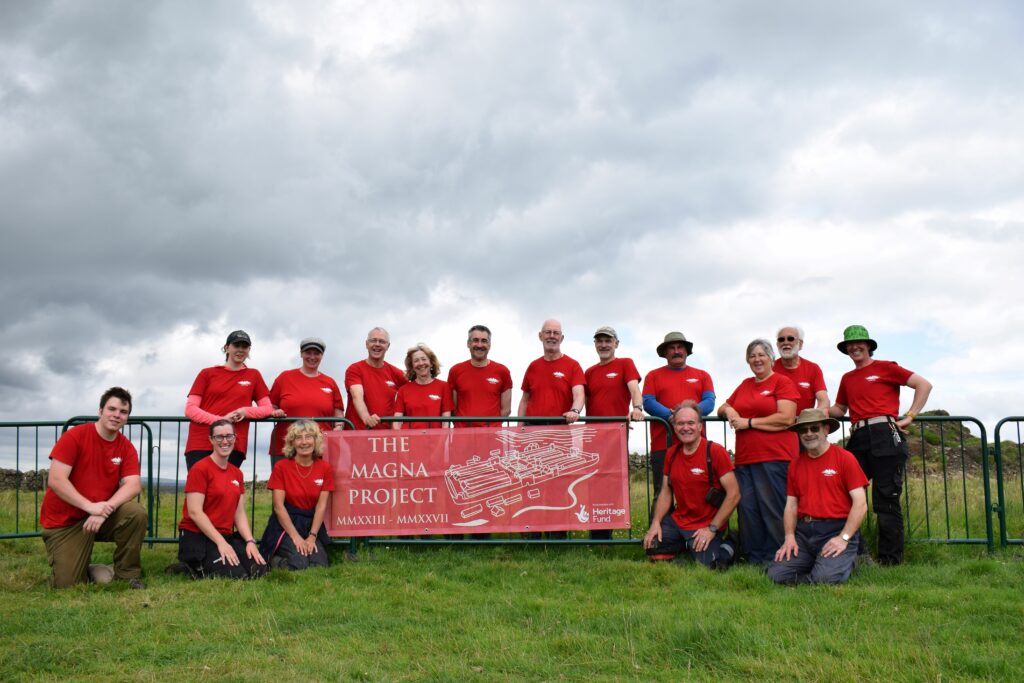
28th July 2023
Magna is officially four weeks old! We’ve had a great week on site finally discovering where our walls are located and – of course – we have our first star find. This week we also welcomed peers from the National Park to discuss how we are using and analyzing the climate data gathered from ‘Wall-E’ (our weather and soil monitoring station). We use ‘Wall-E’ and other probes at Vindolanda to observe the numerous ways that climate change is affecting our sites and how we might mitigate such problems in the future. It was great chatting with people from a variety of different backgrounds to examine how stations like ‘Wall-E’ can be used to help conserve landscape (both of archaeological and ecological significance) around Northumberland National Park. We left with new ideas on how to implement our findings and the hope that other places might follow in our footsteps. It’s wonderful to connect with our nearby partners and understand how our site interacts with the local environment as a whole. Franki
Things are continuing to take shape at Milecastle 46; we’ve gone from having too many walls at the end of week one to one really massive wall by today – the outer milecastle wall! Measuring in at 3.2m wide these substantial foundations have been an excellent reminder of how imposing our site would have originally been during the Roman period. We are also starting to get more Roman finds in parts of the trench, including our beautifully preserved steelyard which is one of only 12 of its kind found so far in the UK. Click this link to read more about it. Rachel
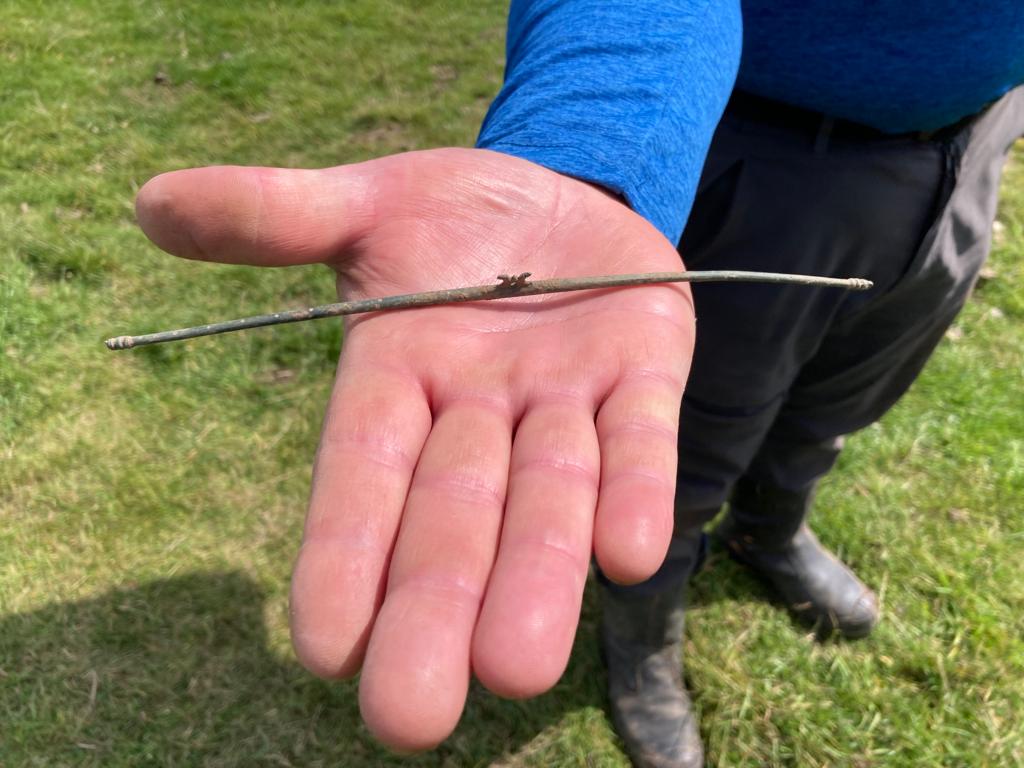
25th July 2023
“Go from the known, to the unknown”. This sage piece of advice was given to me many seasons ago by the Vindolanda Trust’s CEO and Director of Excavations, Andrew Birley and it’s a maxim I remind myself of constantly in the trench. What I’ve learned in my first week of digging period 2 at Magna is that this not only applies at the small scale – troweling from an area you’re confident of into the adjacent material, rather than the other way round – but also the large.
When you step into the trench at Vindolanda there’s more than fifty digging seasons-worth of accumulated knowledge to lean on. Although there are always surprises, this vast body of experience is massively useful. It means, for example, that you generally know which period fort you’re digging in based on the type of stone (or wood) present, how it is used, as well as the overall quality of construction. At Magna, this body of knowledge is almost completely missing. Yes, there have a few brief forays into the ground in recent decades as well as aerial surveys and some geophysics carried out, but the site is essentially virgin territory. Adding to the uncomfortable feeling that we’re poking around in the unknown is the unfortunate history of Milecastle 46: much (perhaps all) of its well-dressed facing stone was robbed out in the 14th century to build Thirlwall Castle, whose crumbling remains lie about half a mile to the west of Magna. Without these it’s hard to tell whether the large stones your trowel bumps into are just random scatter, or in situ remains left from the Roman’s original construction.
Shortly before lunch on Friday I was moved to a new, slightly deeper area. Within minutes, multiple substantial, worn, flat and interconnected stones – all indicative of deliberate placement – began to appear under my trowel: finally some “known” to work from. Whether they are part of a wall or a floor, put there by Roman or post-Roman activity remains to be seen, but it felt good to suddenly regain my sense of archaeological equilibrium. Now if the weather would just improve a bit as well… Justin Volunteer
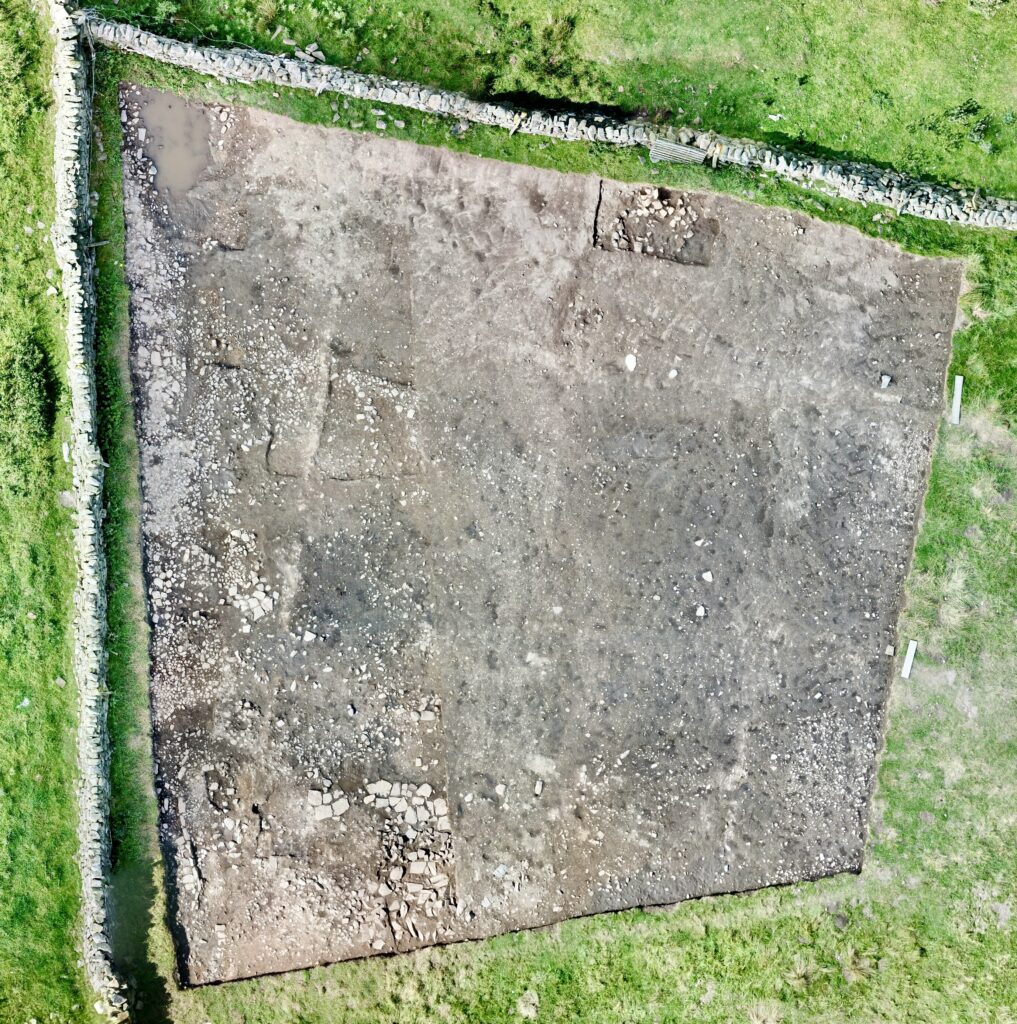
21st July 2023
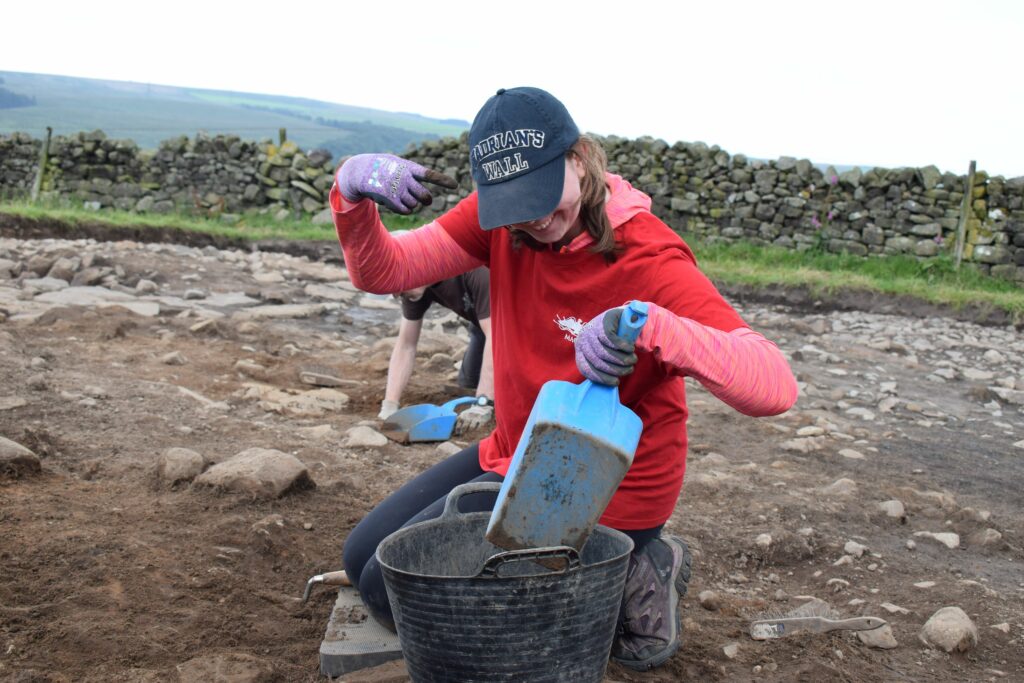
It’s the end of week 3 and our second team of volunteers have been carrying on the excellent work on site, despite the best efforts of the weather! The rain has given everyone a chance to learn more about the history of research at Magna and the impact of climate change on the archaeology. In the trenches we’ve gone from not having enough walls in the last period to having too many walls. There are lots of short sections appearing down the length of the trench, none of which seem to line up with one another! Clearly there’s been multiple phases of occupation and will be a fun challenge unpicking them all as the weeks go on. We’re starting to get more glimpses into Roman life in the milecastle as well; recovering Roman glass, sherds of samian and black burnished pottery, nails and a glass bead. We’ve even had a star find sent off for cleaning and more research, so watch this space to find out what it is! Rachel
This Milecastle gets more and more mysterious each week and it is very exciting to come in each day and see what it has in store. We finally uncovered the corner between the southern Milecastle wall and the eastern Milecastle wall which has been eluding us for some time. Both these walls have been robbed out during the construction of Thirwall Castle but the core is still a mighty 2.3m thick! This definitely would have been an imposing building within the greater Romano-British landscape. I’m looking forward to digging deeper next week and seeing what else we can find. Franki
14th July 2023
Thank you so much to our Period 1 team! We are delighted that some of our excavators have been able to share what this experience, kicking off The Magna Project, has been like for them. Sophie
Unfortunately, the 2 weeks are already over, and as always when you have great time – time flies! Magna is a fascinating project covering many highly relevant aspects, not only around the Romans, but also around climate change and its dramatic impact on archaeological sites. Being a newcomer to excavation, this huge jigsaw puzzle has been an incredibly inspiring experience for me, and I felt like being catapulted into a new dimension. Thank you to the great team at Magna and Vindolanda, and my fellow volunteers for this revelation! My love for history had deepened even further during this short period of time and I am anxiously awaiting to see what further secrets will be emerging from the soil. I will certainly try to come back. Benny Volunteer.
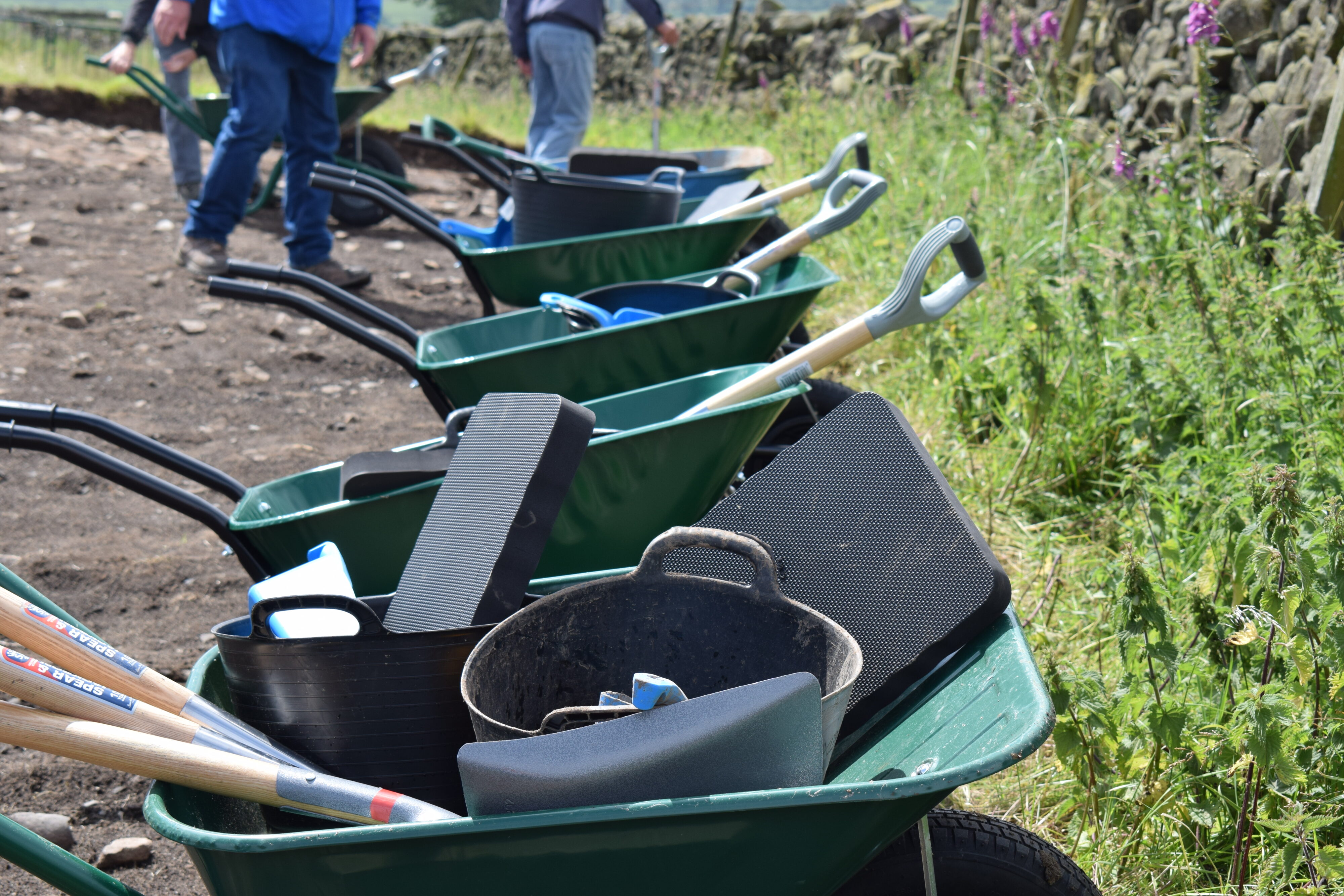
As a newbie volunteer on the first period of the exciting milecastle dig, the site, cleared of grass and topsoil but stony and large, looked rather intimidating. Everyone else seemed confident – so the adventure began. It become rapidly clear that dream of finding a crested helmet or cache of denarii were not going to be fulfilled (yet) but to my great surprise I become fascinated to uncover different layers of road surface. The mediaeval layer has scattered sherds of later pottery, possibly dumped by a famer. On a lower layer different looking stones became clear. Andrew came across and said ‘That’s a Hadrian Wall stone’. Just thrilling! Rachel gave us regular updates on the current interpretation of finds as the clearance continued. Possible walls, floors, and other signs of occupation and construction gradually emerged, not always exactly where were expected but always exciting to see. Franki kept us interested in the probes and the disturbing signs of climate change. Interesting fact – we learnt that worms coil themselves up if the soil isn’t moist enough.
By week 2 we had got three distinct layers on our section of the road; Hadrianic, Severan resurfacing and somewhat chaotic mediaeval resurfacing on top. The site looked so different and fascinating it was hard to leave, so fingers crossed for a place next year to find out more.
We were pretty lucky with the weather, and I hope that continues for the whole season. Good luck period 2 team. I hope you have as great a time as we have. Floreat Magna! Ros Volunteer.
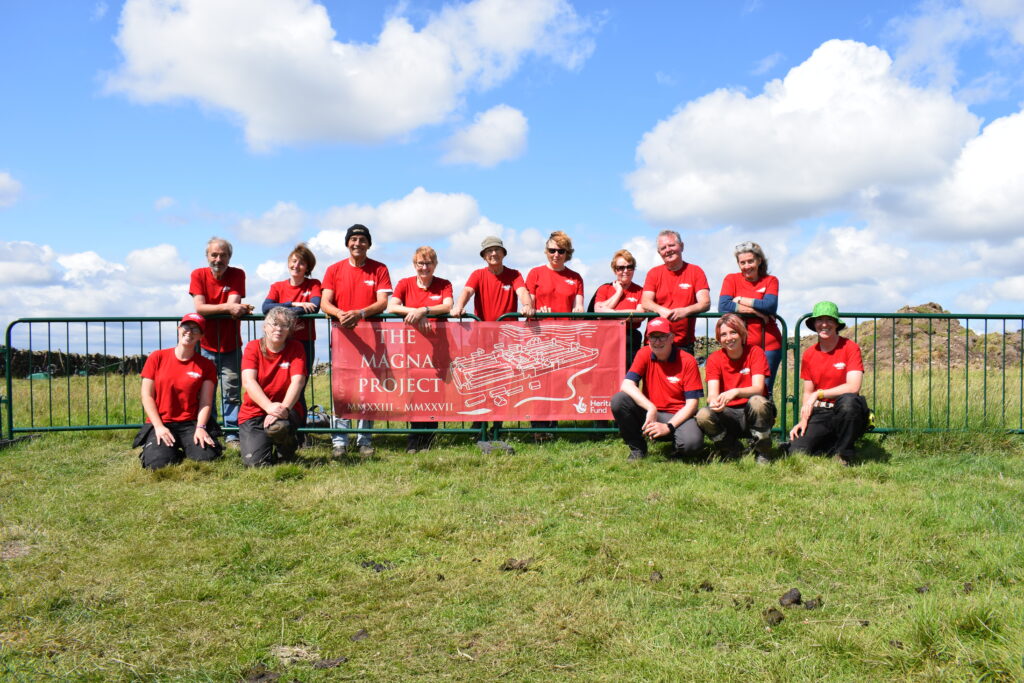
7th July 2023
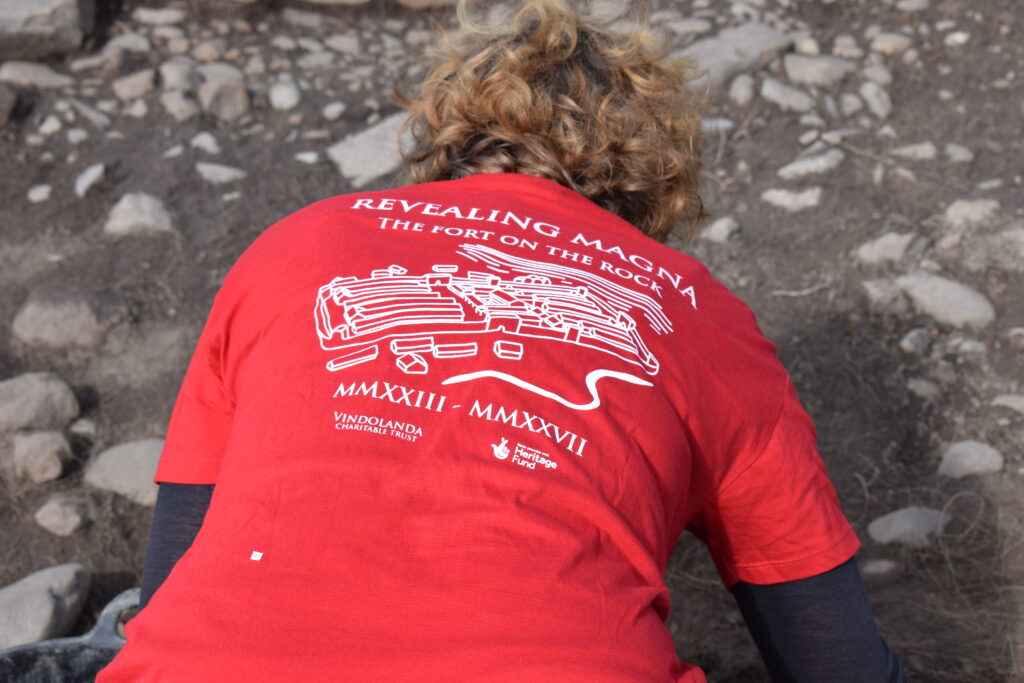
Our inaugural week here at Milecastle 46 has come to a close! Our pioneering Period one team have made it halfway through their time with us, and you can really tell all their hard work has paid off this week. A huge thank you to everyone who has visited us trench-side, joined us for our journey so far online, and of course to our volunteer excavators who have made this week such as pleasure – not least because of the excellent biscuit and cake stash that has appeared in the excavators yurt! We are already looking forward to continuing our exploration into the archaeology next week, so keep checking back for any updates. Sophie
It’s been so cool to see the Milecastle come to shape as we clean our way eastward in the trench. The volunteers have been absolutely killing it and their enthusiasm has really rubbed off on the team and those who have visited us. I am really excited to see what the following weeks hold as we make our way deeper into the mysteries of the Milecastle. Franki
The western side of the trench is looking amazing with lots of tantalising archaeology now visible and just waiting to be excavated next week. You can now see the Roman road running through the centre of the milecastle, and parts of a medieval road laid over the top, as well as outlines of potential buildings and floor surfaces. I can’t to see what else we find next week when we start digging in these areas – one week down, eleven to go! Rachel
5th July 2023
As our dig here at Milecastle 46 enters the third day, we have had some exciting developments. Check out our first small find – a roll of photography film! Whilst the Romans may not have been snapping away, who knows what this will reveal about the history of those that have come before us on this site. Perhaps previous archaeologists? Or Hadrian’s Wall tourists? We can’t wait to see any images our team at the Vindolanda Lab can save!!
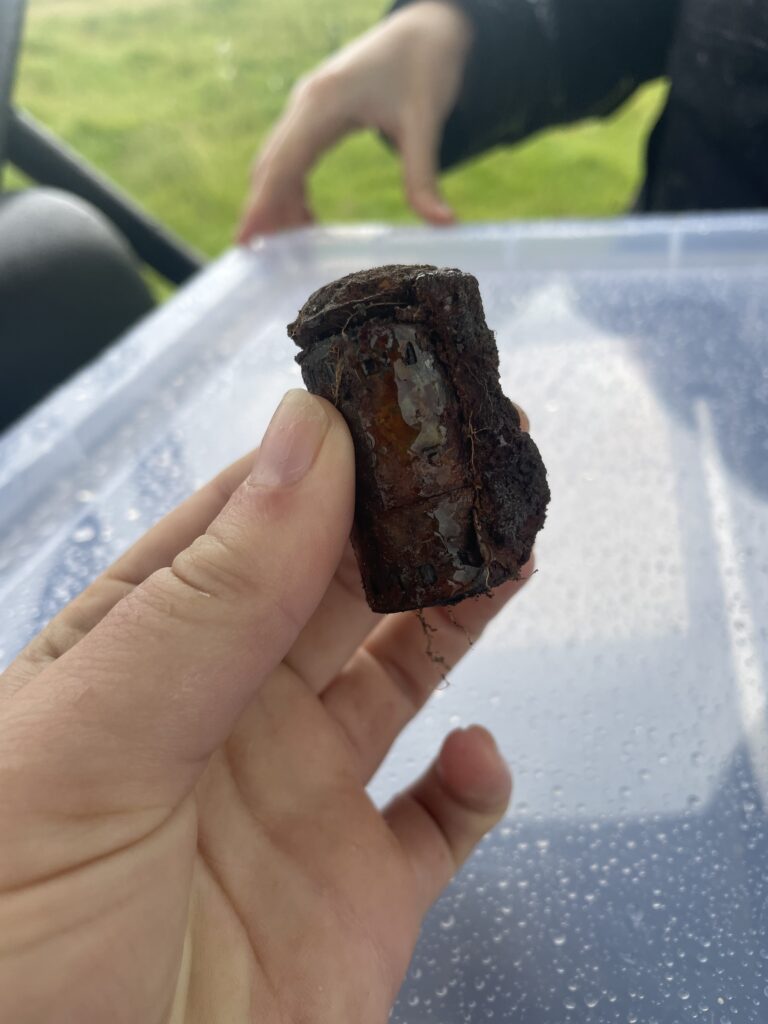
We are also delighted that Carly, editor at Current Archaeology, came to join us on site this morning to capture some very ‘current archaeology’ happening here at Milecastle 46. She was able to see the progress our crack team of Period 1 excavators have made along the western edge of the trench, as well hear all about our 5 years plans for The Magna Project. Look out for the next few editions of Current Archaeology for the upcoming feature on Magna Fort!
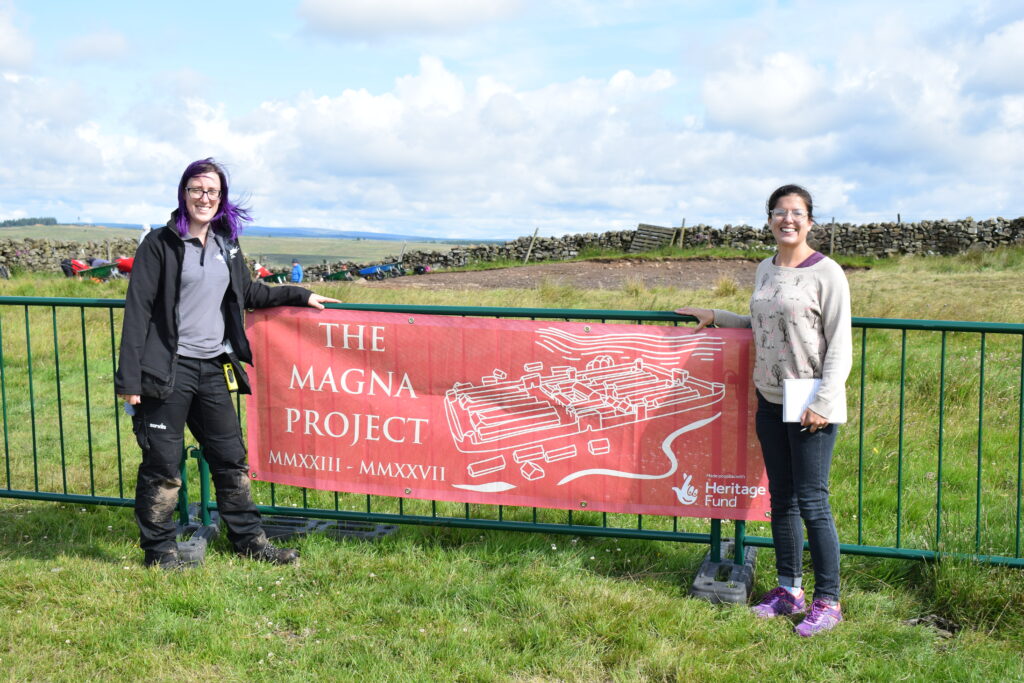
If you would like to get up close to this frontier archaeology, there will be visits trench-side running during the weekday 11:30am & 2pm for ticket holders of The Roman Army Museum. Sophie
3rd July 2023
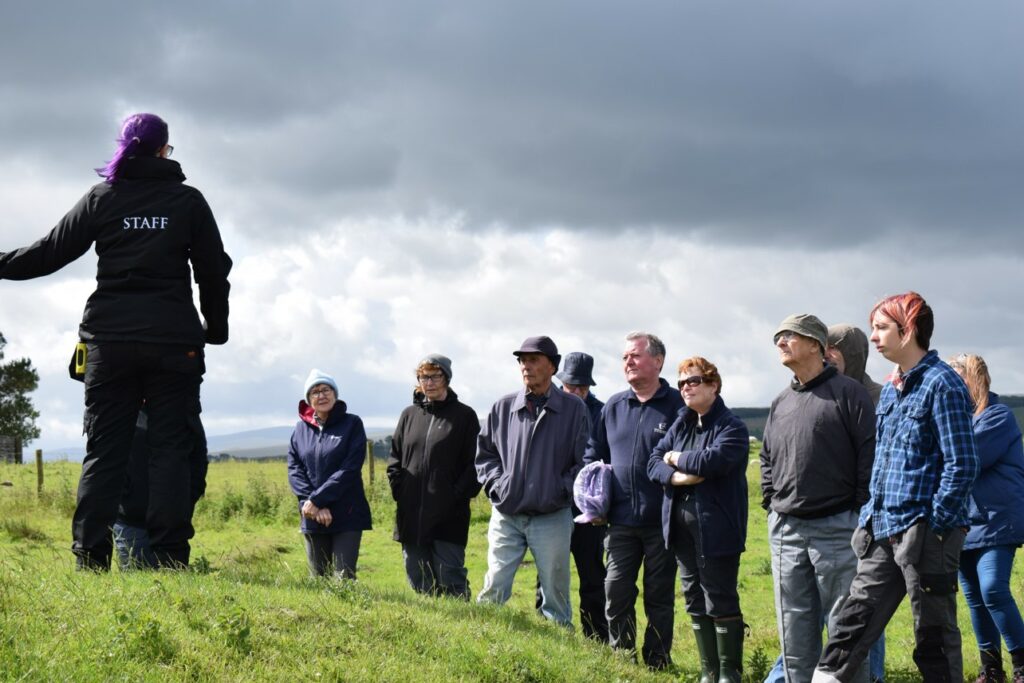
We are officially up and running here at Magna, with our first team of volunteer excavators joining us on site today. We started the morning off with a tour of the Magna site; covering our plans for the next five years, the environmental data and the impacts of climate change, and the wider historical landscape around the fort. This all helped to set the scene for the excavations and the volunteers couldn’t wait to get started in the trench. They also got to experience the full extent of the weather we get at Magna today; nearly getting blown over by the wind, enjoying the stunning views in the sun, and then getting drenched in heavy showers with some hail thrown in for good measure! None of this was able to dampen their spirits though and the enthusiasm for excavating the milecastle continued through the afternoon. Already we have uncovered a road running down the western edge of the trench that would have originally passed through the north and south gates of the milecastle, the line of which has been resurfaced and reused in the Medieval period. I can’t wait to see what else we’ll find as the dig goes on! Rachel
23rd June 2023
Our trailblazing 5- year Heritage Lottery Funded project at Magna Fort and The Roman Army Museum has begun! Working at Milecastle 46, Rachel, Franki, and Andrew – with the invaluable support of Matty and his digger – have been clearing away the turf, to reveal the initial markers of archaeology within this landscape. Unearthing this previously unexcavated site has given us the chance to start the exploration of what has lain underneath for 2,000 years. Our wonderful team of volunteer excavators will then have the opportunity to join our 12-week dig starting on 3rd July, hopefully revealing even more of the history of our Milecastle 46 here at Magna Fort and The Roman Army Museum. A huge thank you to the Heritage Lottery Fund and National Lottery Players for supporting this project. Trowels and tenacity at the ready! Sophie
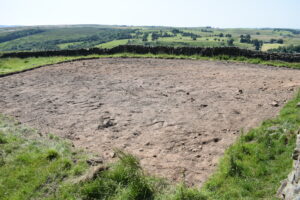
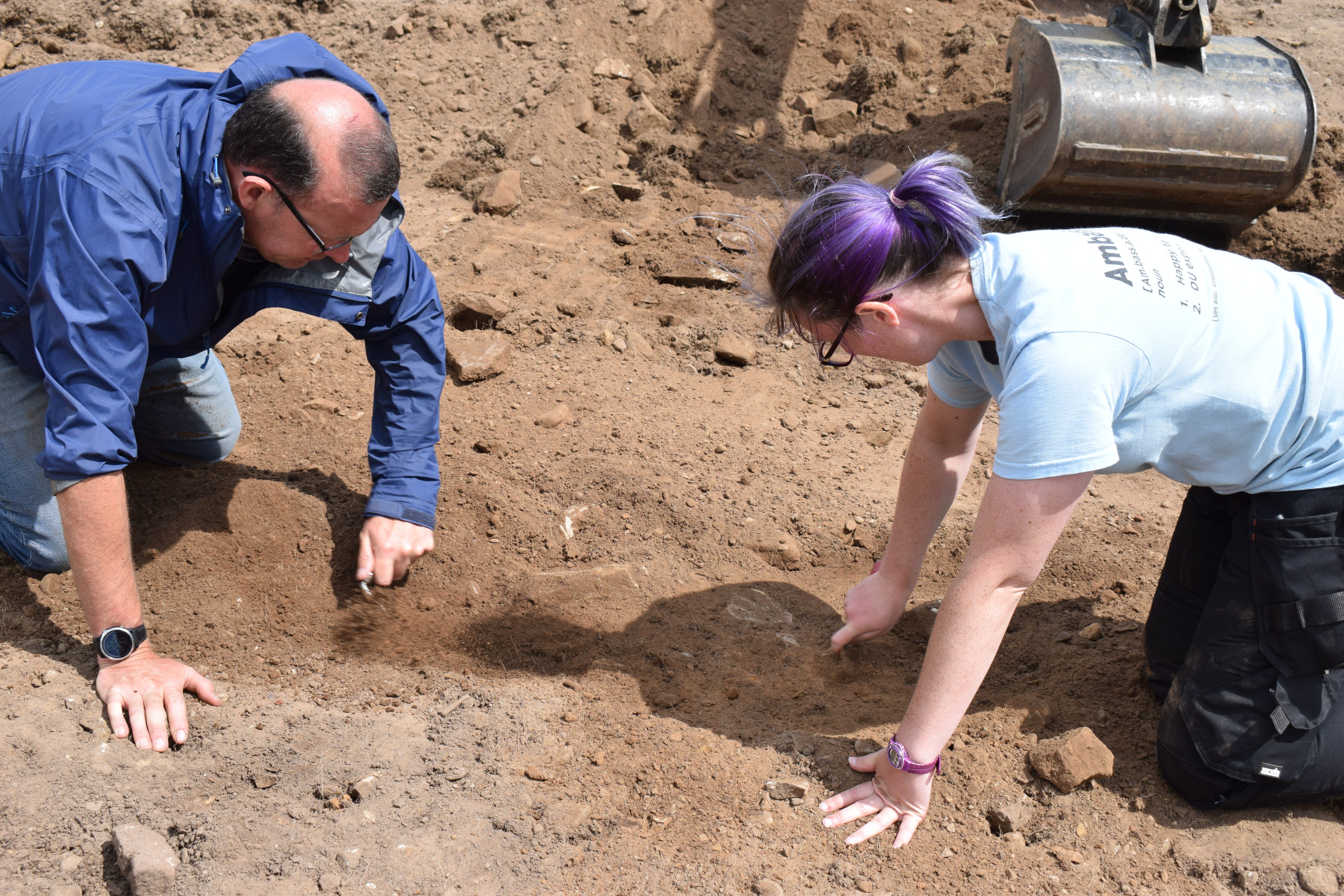
While no substantial walls or features have been uncovered so far, there are already exciting glimpses of the archaeology peeking through, just waiting for our crack team of volunteers to start uncovering. We’re hoping to learn more about the south gate, walls and internal structures of the milecastle as well as any activity that was going on around the outside of the building. Rachel
31st May 2023
If you’ve visited the Roman Army Museum recently you might have spotted some developments as we prepare for the first excavation season at Magna. Fencing has arrived, a rather impressive yurt has popped up behind the museum (for this first season the excavation base for volunteers, in 2024 we’ll have some great activities in there) and we also have a new “kissing” gate which will give access to the field without sheep escaping. The first volunteers join us on 3rd July – not long to wait now! Sonya
